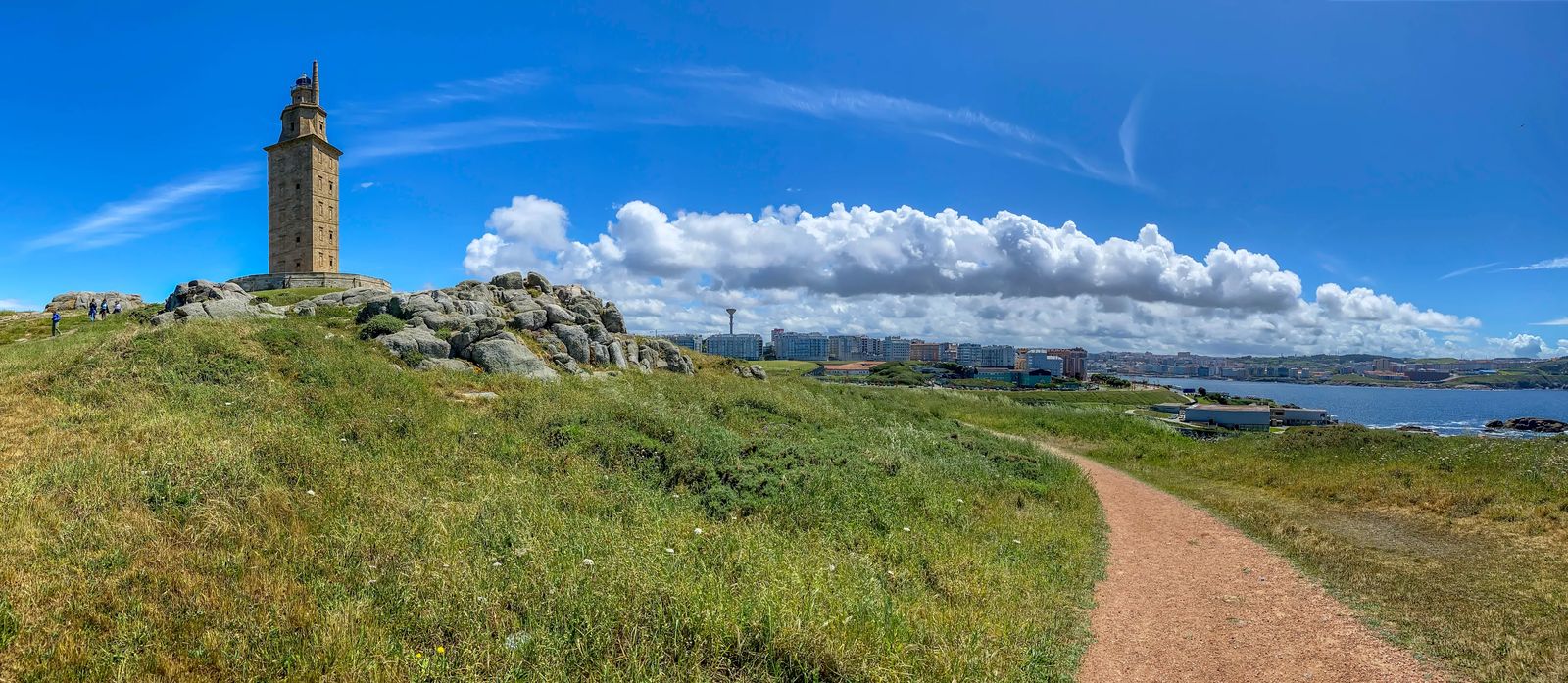
22 Things To Do In La Coruña Spain, Galicia Getaway
The thing that will strike you the most when visiting Coruña is the absolute chill vibe of this city. While tourists do visit this small ancient coastal town, it caters more to its citizens and their quality of life. From the Paseo Maritimo, a nearly 6-mile walkway that takes you from the great Roman Tower of Hercules to the Castle San Anton full of Roman artifacts recently discovered after a revamp of some of the city roads. No matter your traveling flavor, you are sure to find something to satisfy both the outdoor and cultural travelers.
I personally found it a bit difficult to gather information about the city as I speak enough Spanish to get me in trouble, but not enough to get me out of trouble. Luckily I was accompanied by my friend, a local who speaks fluent Spanish, and a bit of Galician. So I have put together this comprehensive guide of the 22 best things to do in Coruña with the history I was able to translate for you from the handouts I gathered at the locations mentioned in this article.
Much of this information are things you won't find on Wikipedia or even the tourism website. I put this together as a labor of love so you can fall in love with the food, people, and rich history that is housed within this Crystal City.
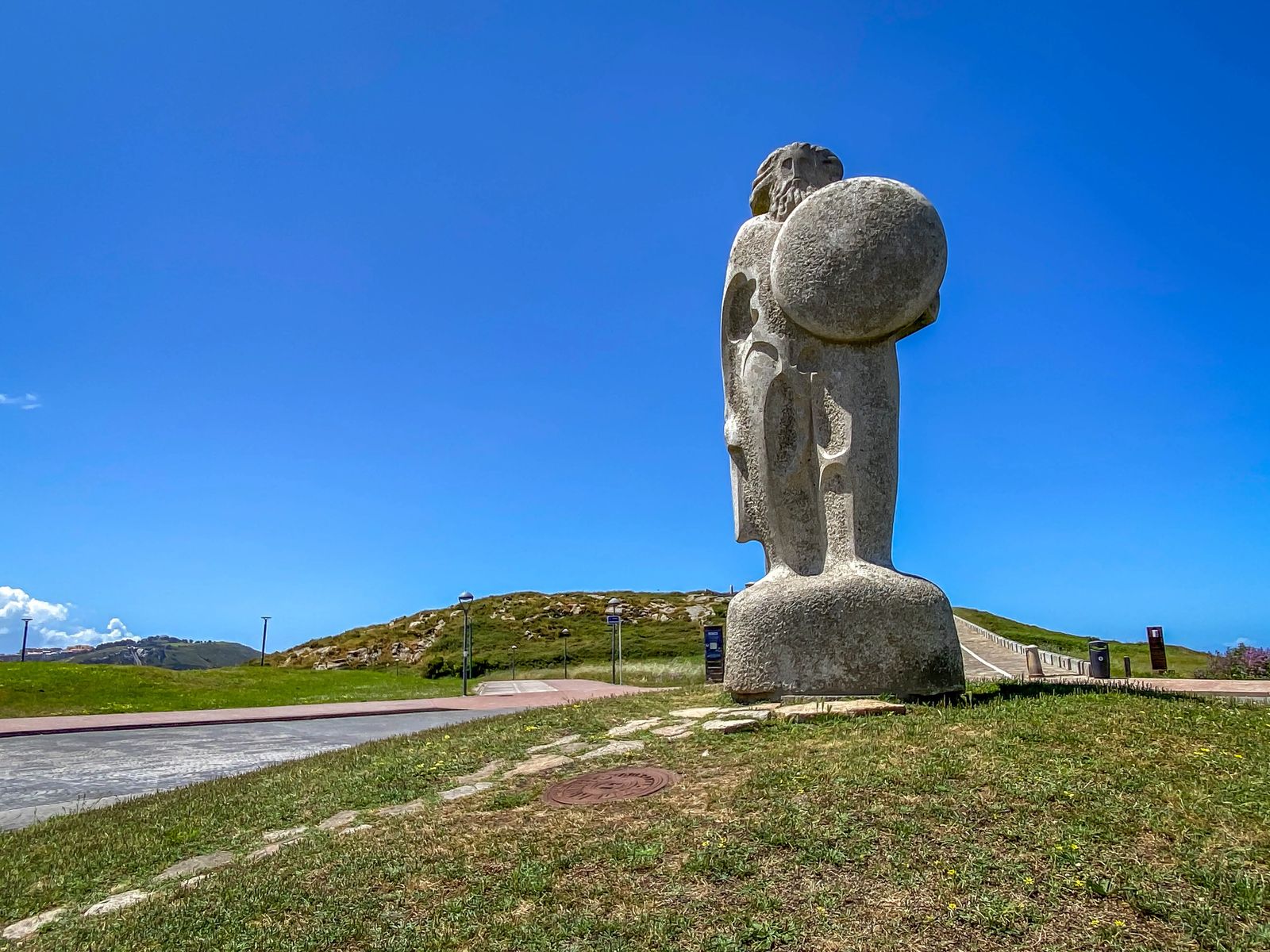
Brief History of La Coruña
Besides being an important trade center, and fishing village, it also was an important textile city in the middle ages. The city wasn't officially recognized until 1446 by King Juan II, who helped establish free trade between England and Spain.
Coruña is the second biggest city in Galicia with modern buildings and architects like Antonio López and Julio Galán contributing to this gorgeous seaside city, it is also the financial hub of Galicia.

Hercules Lighthouse (Torre de Hércules)
Open Daily from 10 am-5 pm
This is the oldest continuously operating lighthouse in the world, operating since the 1st century AD. This UNESCO Heritage site was originally built on a rock outcropping standing 180ft (55m) tall. The exterior of the tower was renovated in the 17th century, but the interior retains much of its original form.
There are four levels, and each level has four rooms adjoining rooms or atriums to help stabilize the structures height. If you look at the floor there are keystones in the flooring, including the keystone in the archways exhibiting the ingenuity of Roman architecture and design. The lighthouse still works every night, and a lighthouse keeper methodically cleans the light every day in order to ensure the safe passage of ships.
Near the lighthouse, you will find sweeping views of the Atlantic Coast where the shipping trade between England and Spain took place. There is a small roman building to the side of the lighthouse, a sculpture park with rock carvings from the Iron Age, and a Muslim cemetery.
There is a legend about how Hercules battled the giant Gerylon here with an arrow dipped in Hydra's blood. The killing of this giant is considered to be one of the 12 mythic labors that Hercules performed. It is said that the bones of the giant still lie under the lighthouse today, and you can see these bones on the compass near the lighthouse as well as within the flag of Galicia.
To get here take bus 3, 3A, or 5 and download the iTranvias App to get the latest times on bus routes to the Lighthouse.
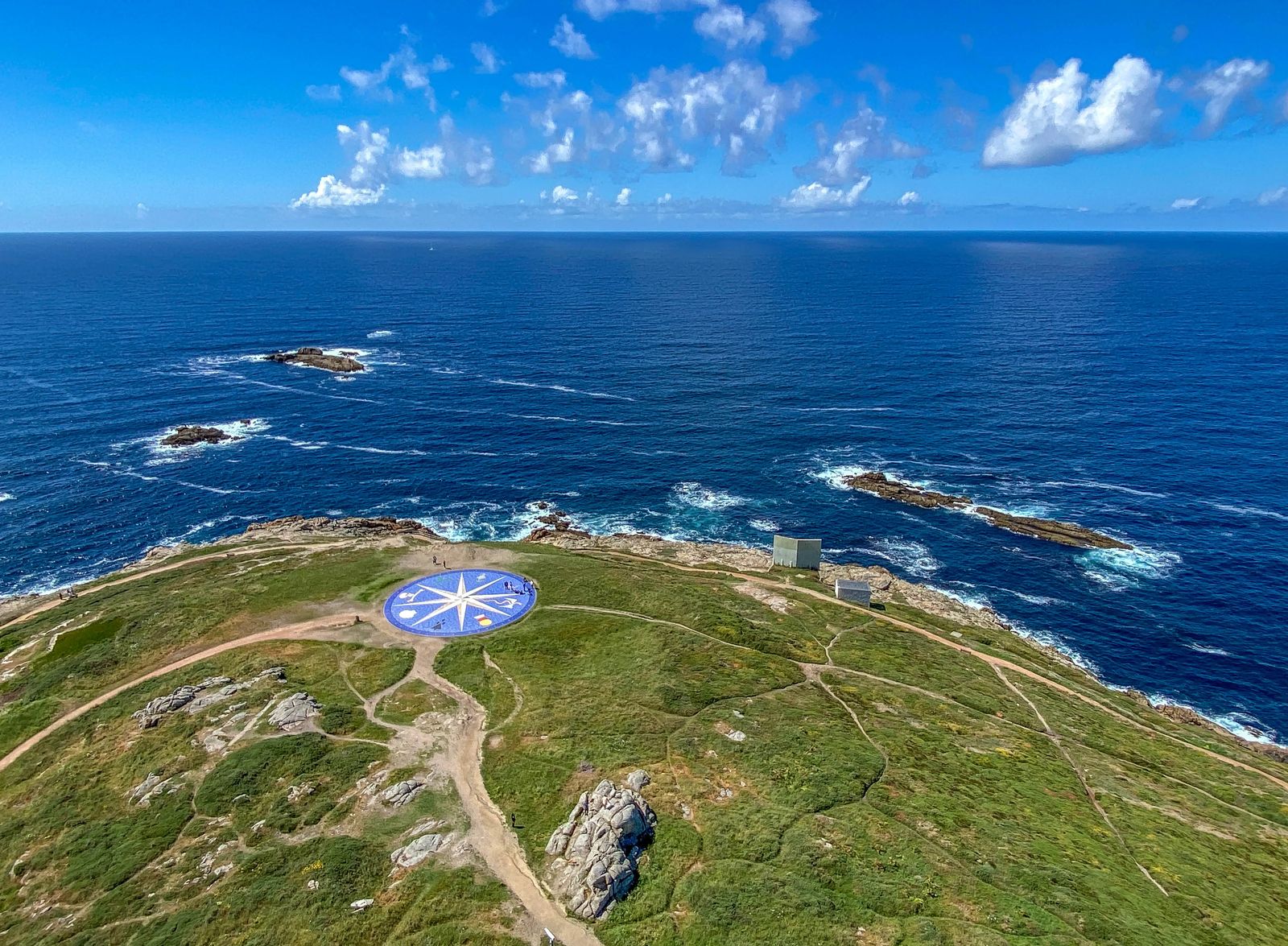
Iron Age Sculpture Park and Compass
Outdoor spot never closes
Close to the Hercules Lighthouse you can find the nautical rose by Correa Corredoira, a giant compass. Within the compass, you can find the eight Celtic nations represented by Ireland, Cornwall, Wales, Scotland, the Isle of Man, Brittany, Galicia, and Asturias. You can pick out the Galicia symbols because it has the bones of Gerylon the Giant in them.
As you tour the area near the lighthouse make sure to spot the 18 sculptures that dot the landscape and tell a bigger story of Galicia. It can be hard to discern what is what as far as the sculptures so download the guide here.
Some of the statues you will come across are the family of Menhirs (looks like standing stones), Monument to the shot (Stonehenge-like), Hercules on the ship of Argonauts, Cup of the Sun, Brogan, Caracola Shell, and many more.
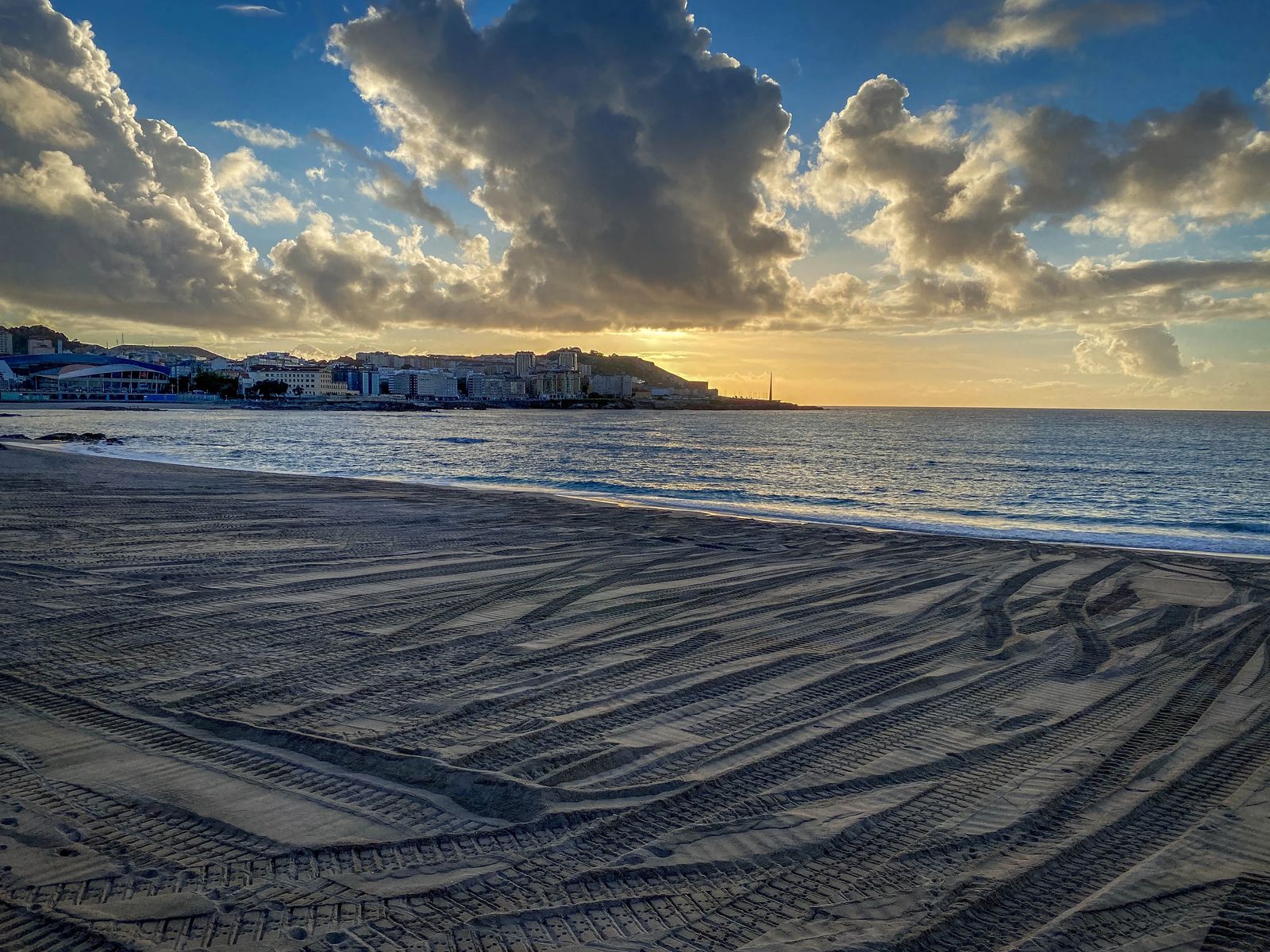
Praia de Orzán and the Mermaid
Always open
During the winter months, the sand is piled high in order to prevent the stormy waves from flooding the city. During the summer months, the sand is flattened out for all to enjoy. During the summer there is also a bonfire festival where a giant structure is lit on fire to celebrate the summer (or at least that is what my local friend thinks was being celebrated). Despite living in La Coruña and growing up here, she is still puzzled by some of the random festivals that take place here like the Sardine Festival, a festival where animals are brought into a church and blessed, and of course this bonfire festival. If nothing else, take a stroll along this very popular path at sunset and admire the mesmerizing views.
It is a 1.6km stretch of sand separated by the more adult pebble man-made beach on the other side of the stairs. Follow the beach caution flags because there are rip currents with the Atlantic Ocean, and even a memorial to some police officers here who lost their lives trying to save someone drowning.
You can rent a boat for 50 Euros a day and see the many castles and gorgeous coastlines of Coruna. There are also paddleboards, kayaks, bikes, and plenty of eateries to get some grub. Please make sure to pack in and pack out everything you bring to the beach, and keep things tied down so it doesn't end up in the ocean.
Be sure to spot the mermaid statue along the beach pointing out to the ocean, she reminded me a lot of the one in Gdansk.
This beach can get a bit crowded but just be careful because some beaches are topless in many European countries. I work in healthcare, so it doesn't bother me, but for those more conservative I did want to mention it.
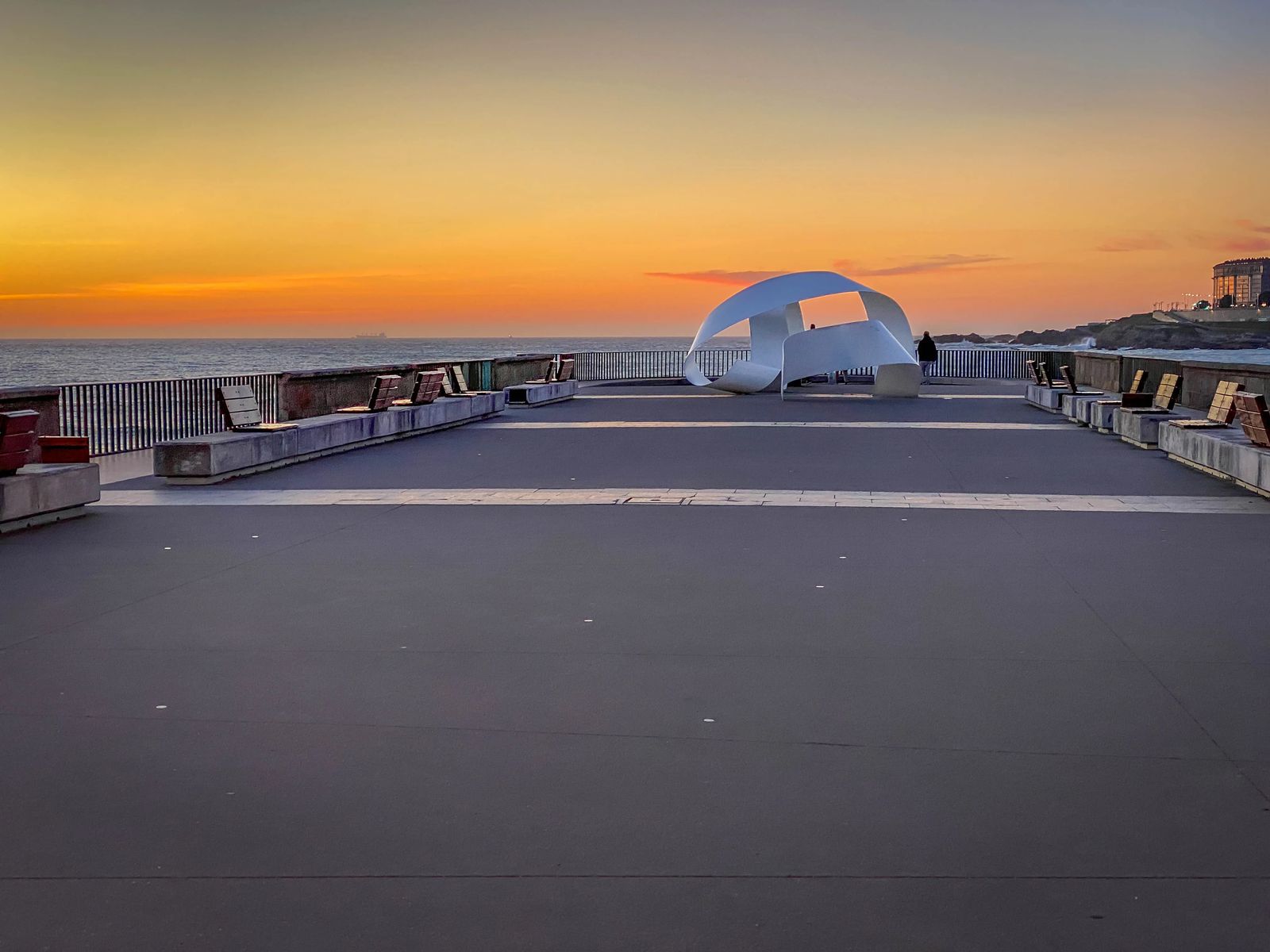
Monument to the Heroes of Orzán
This memorial is dedicated to four policemen to lost their lives attempting to save a citizen that was caught in the powerful Atlantic currents. Please be careful if you decide to take a dip in the frigid waters, the currents are incredibly powerful and you not only put yourself at risk but others. You will see some locals in wetsuits braving the waters with personal flotation devices attached to them because the people here know and have a healthy respect for mother nature. If you want to take a swim, try the San Amaro beach instead.
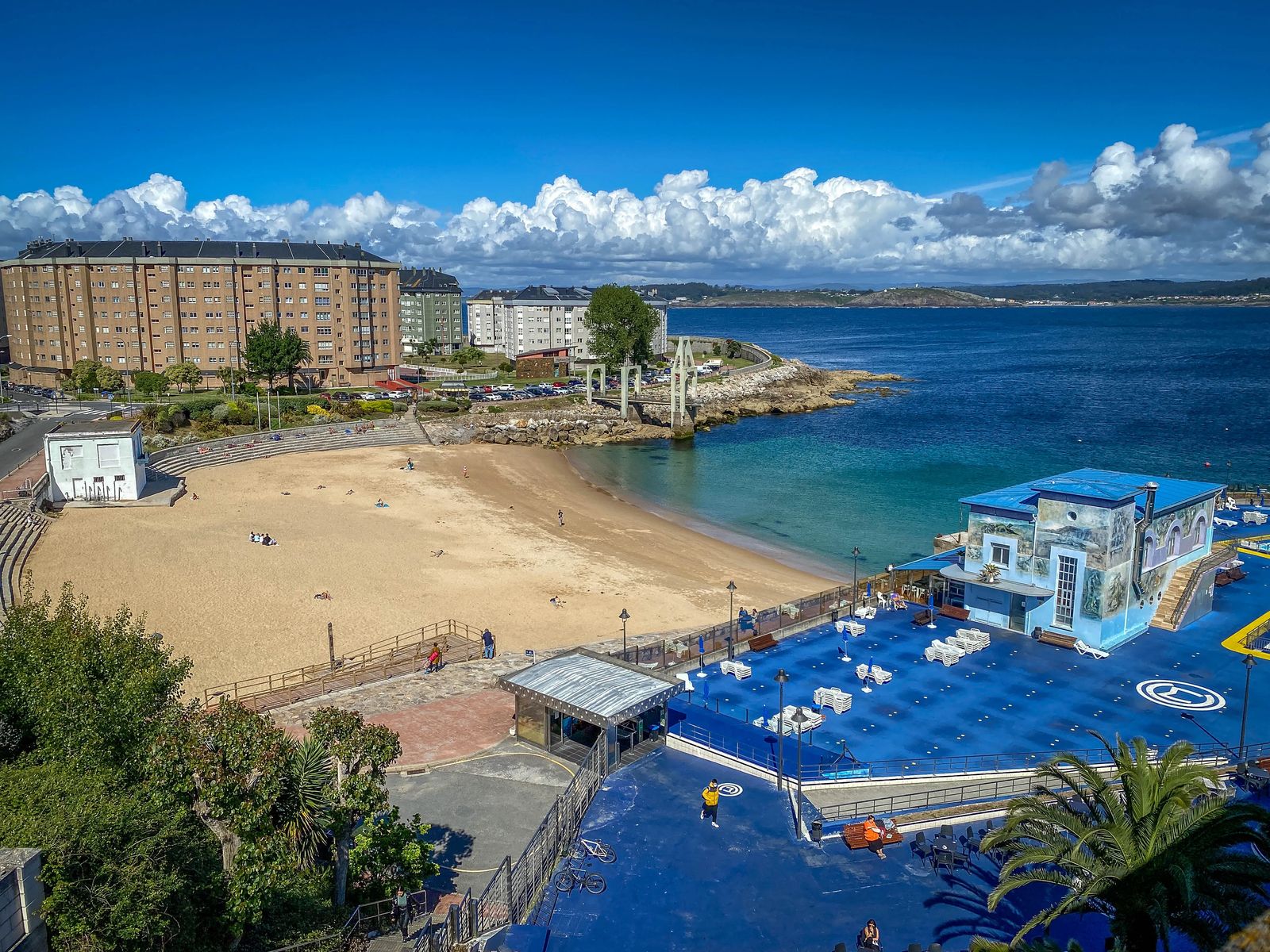
Playa de San Amaro
The Death of the Sardine happens here every year, and a sardine is thrown from the pier with a solemn prayer and worshipped for the life that it gives. The Fiesta de la Sardina is a festival in honor of the popular blue fish that is served on nearly every restaurant menu in Galicia. The festival is typically held in at the end of Carnaval, which is at the end of March/April depending on Lent. The Festival consists of a very sorrowful-looking man dumping sardines off the pier on the far side back into the sea here.
Beyond the Sardine festival, the blue patio area (see photo above) is an outdoor lounge area as well as a gym, if you are a gym member you can lounge there. The beach is a blue flag (minimal current) beach that is great for taking a chilly dip in the sea if you can brave the cool waters of the Atlantic.
This beach is conveniently located along the beautiful maritime walkway (see below).
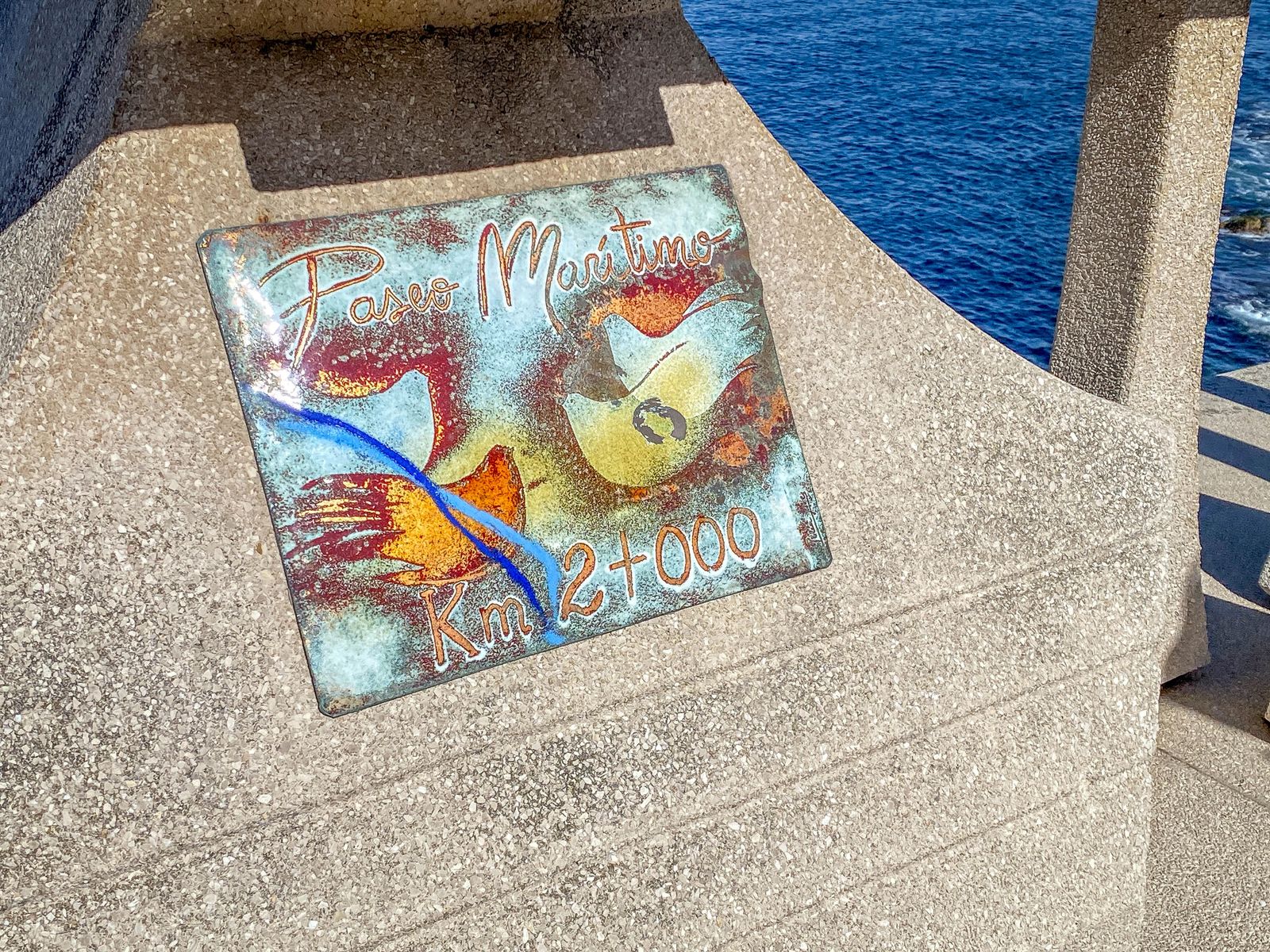
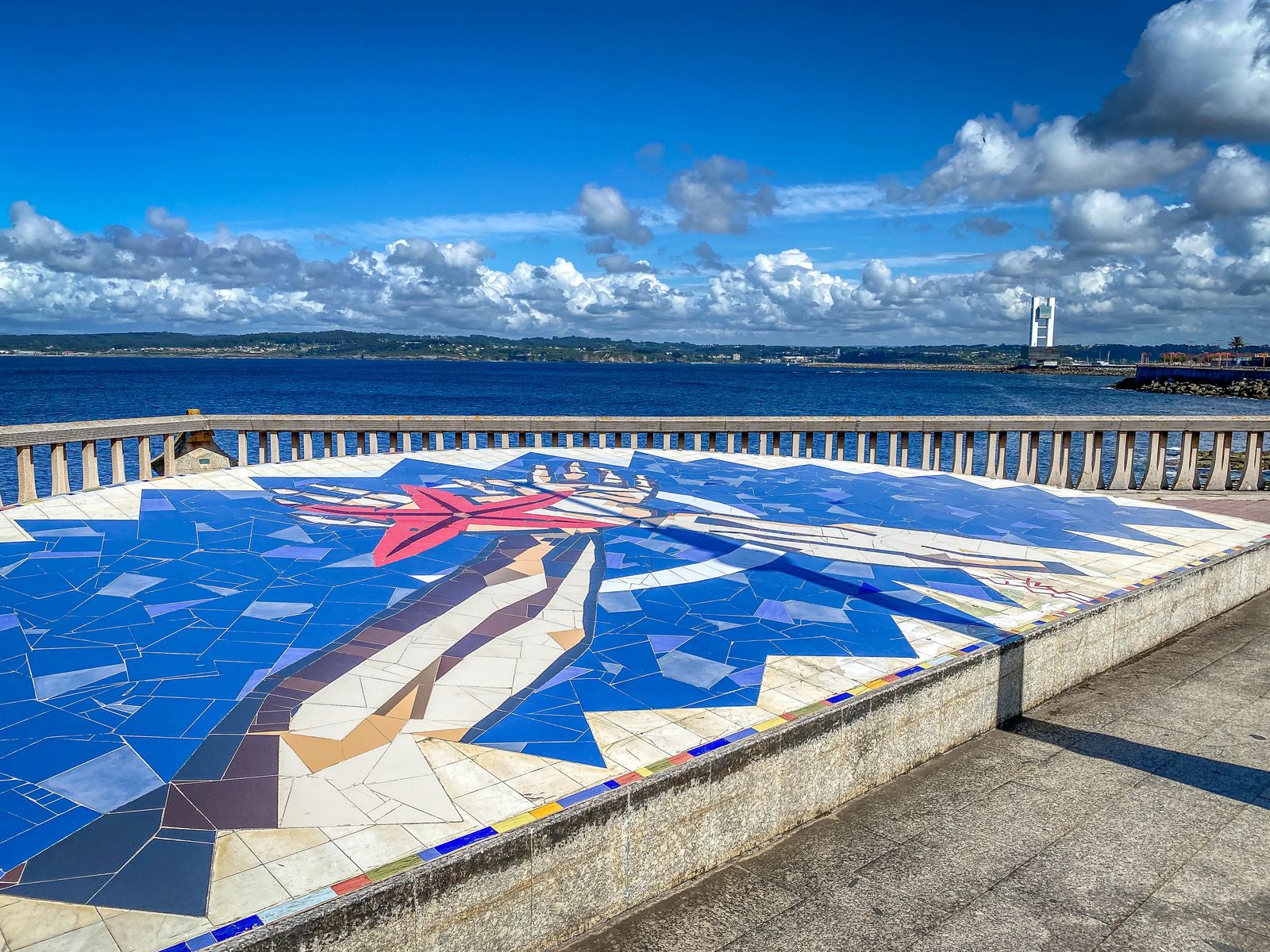
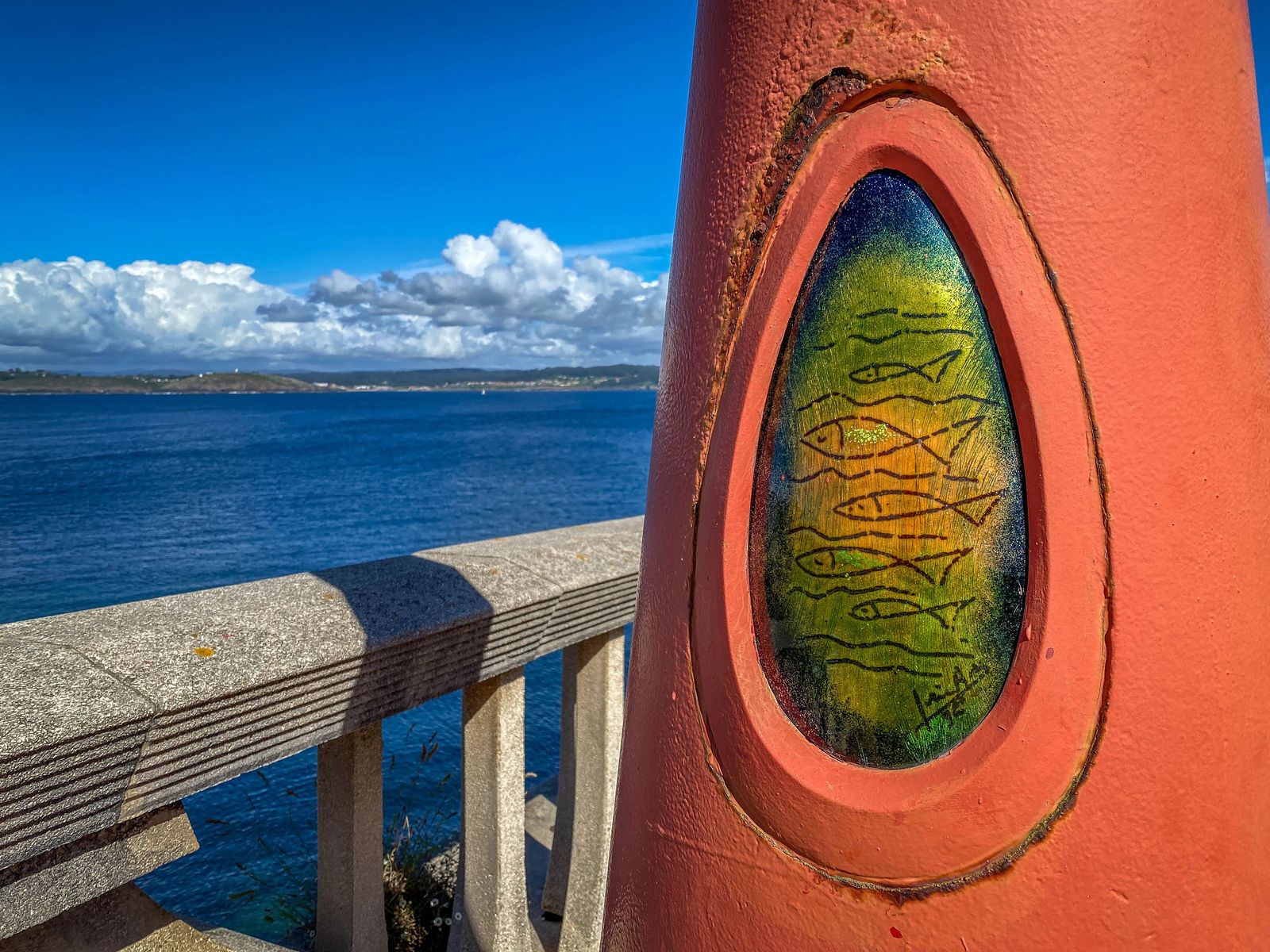
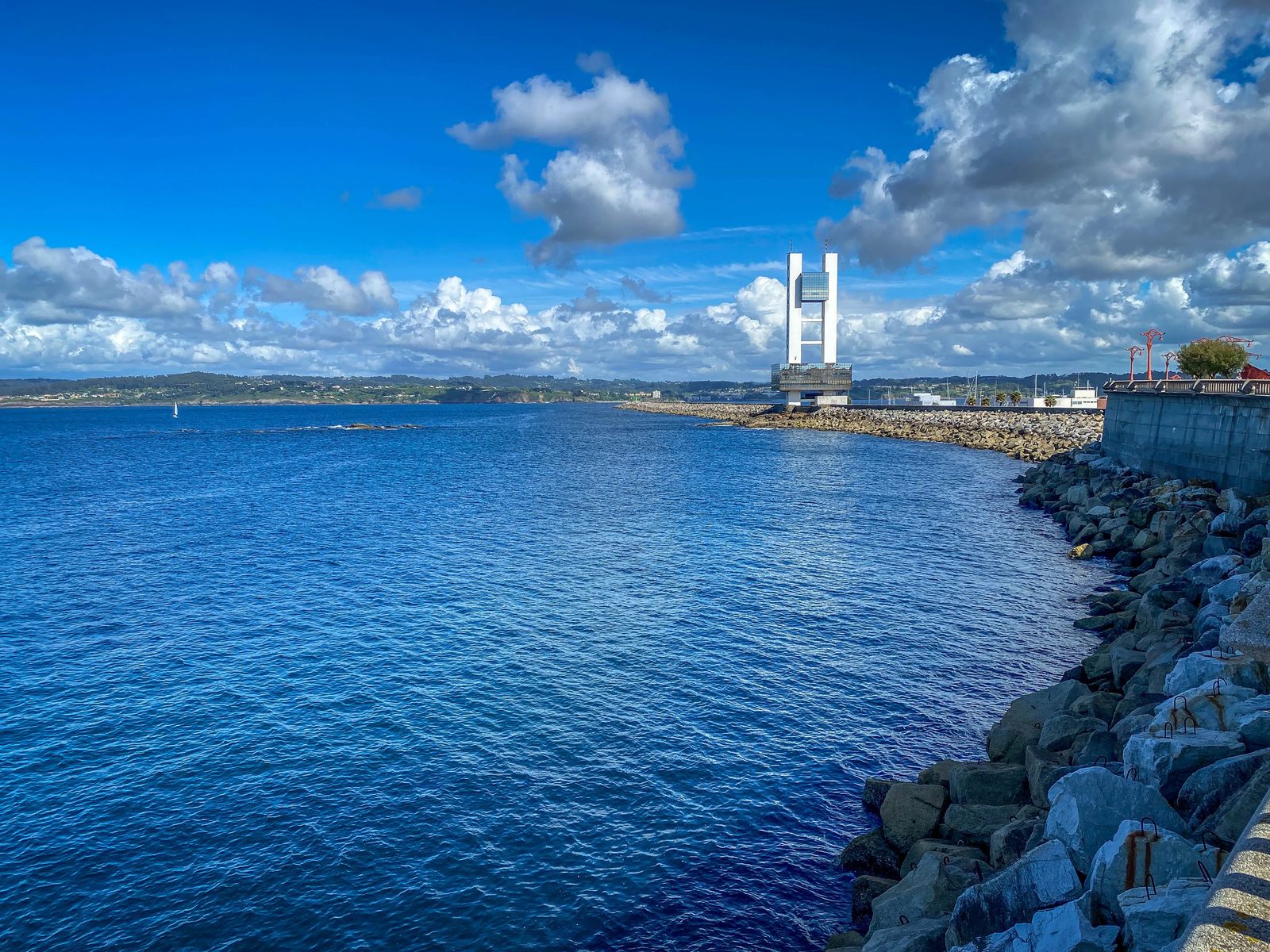
Paseo de Maritimo
If you want a day to take in the Atlantic breezes, and gush over the rugged rocky coastline of Coruña then I suggest taking a walk along the Paseo de Maritimo. Here is where you will find locals doing their morning or evening runs in step with sunrise and sunset. It is quite the walk, over 5.6 miles (9km), but it takes you past many of the main sites of the city by doing so.
Start at the Hercules Tower and wind your way past beaches, unique architecture, old city walls, and fortifications, as well as statues and the famous Octopus of Coruña. I suggest bringing some water and a picnic so you can take advantage of having lunch by Castle San Anton looking out over the castle and the ships passing by. Then wander your way through the old city and have dinner at my favorite restaurant in Coruña, Xestal.
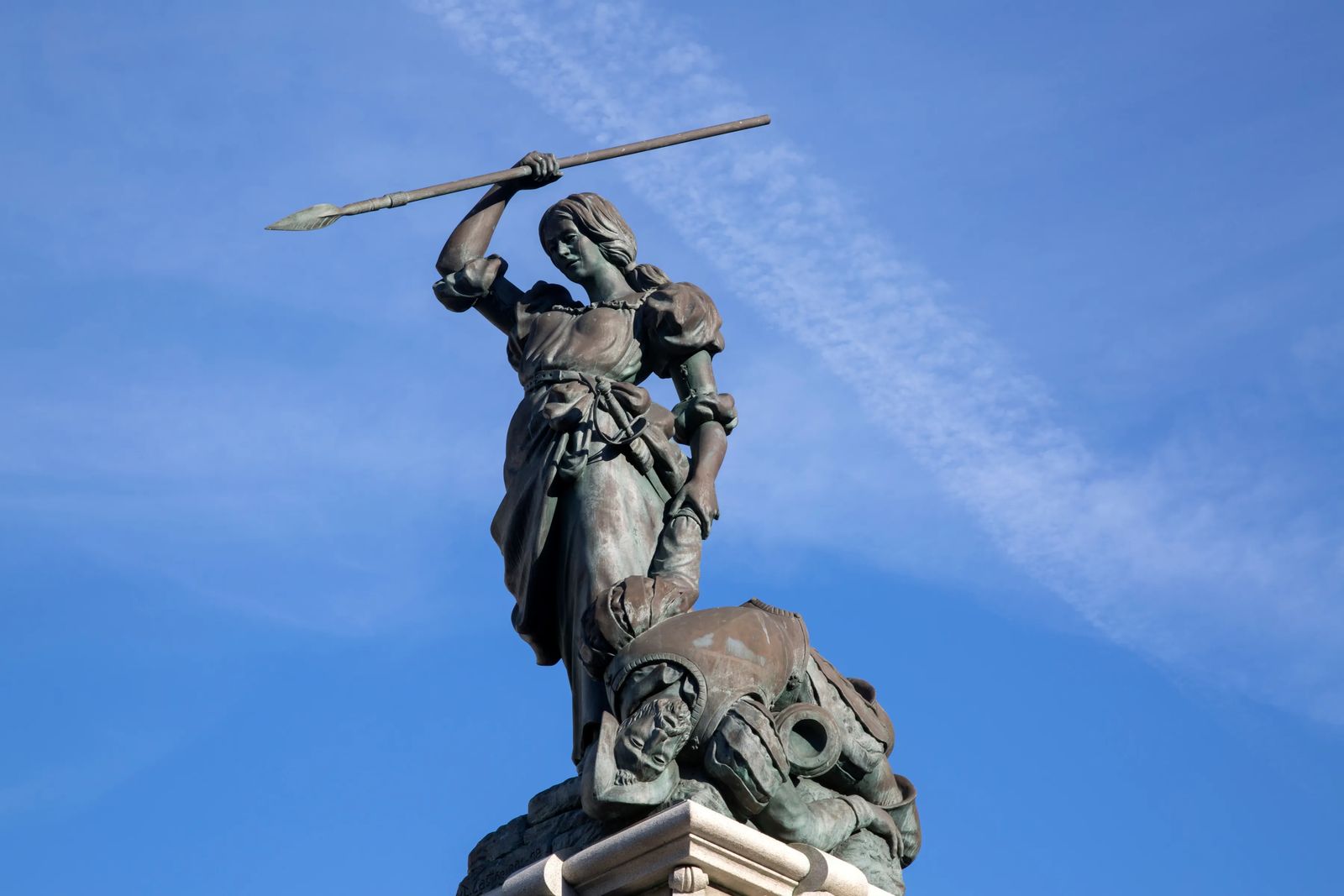
Praza de María Pita (María Pita Square)
Always open, free admission
In the center of this historic square where all the locals seem to congregate, you will find the 30 ft (9m) statue of María Pita (born in 1565) who in the 16th century fought against the English invasion, led by Sir Francis Drake, who locals called Pirate Drake. It was designed by Xosé Castiñeiras, who put a spear in her hand and said to have killed the English Lieutenant.
The legend goes that she was assisting her husband in charge of the defenses, and the English had breached the defenses of the old city. Filled with rage at what they were doing to her city she fought her way to the Pirate Drakes's brother, snatched the banner he was carrying, and stabbed him with it (talk about one badass woman). It was such a demoralizing thing for 12,000 men to have their commander killed by a woman that they withdrew from the city.
Unfortunately, Maria's husband was then struck by a crossbow in the head and killed. Seeing how she had already lost so much, her city ransacked, her husband killed she lept to the city wall and cried in heartbreak and rage, "¡Quen teña honra, que me siga!" - "Those with honor, follow me!".
Concerts are often held here in the summers.
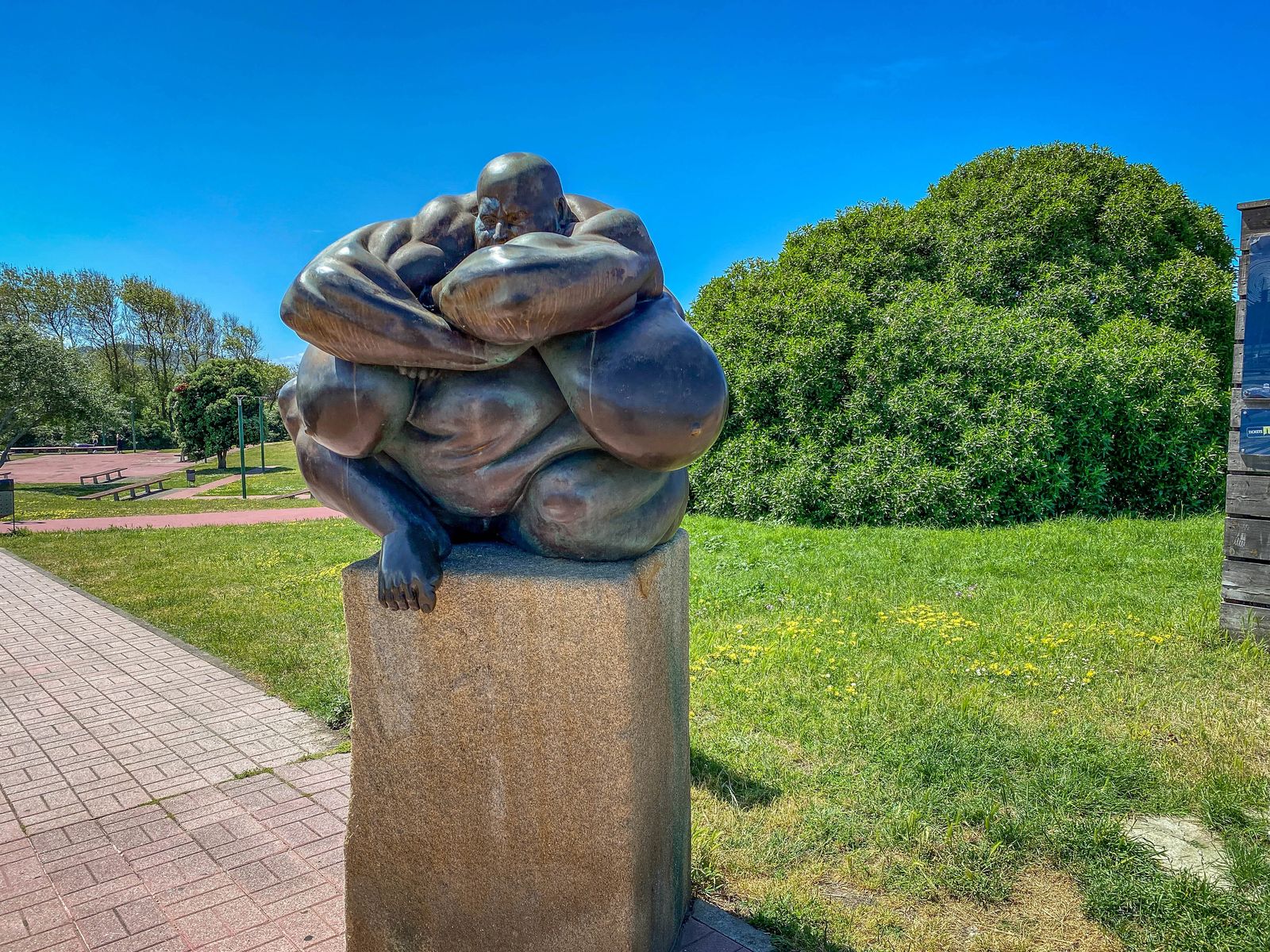
Fine Arts Museum
Open Tues-Fri 10a-8p, Sat from 10a-2p and 4:30-8p, Sundays from 10a-2p and closed Mondays
Free admission
Opened in 1947 this museum features Goya's etchings and Sargadelos China collection, Flemish and Galician painters this important Galician Art Museum is a great stop if the weather isn't favorable. There are over 5,000 pieces in the museum from paintings, sculptures, ceramics, and other arts. rt
The museum itself resides in the old plot of the Capuchin Sisters Convent, constructed by Fernando Casas y Novoa in the 18th century. The paintings within highlight many of the major Galician artists like Sotomayor, Colmeiro, Laxeiro, and Seoane. There have been substantial efforts to purchase a complete range of Galician art from the 19th century up to the present day.
There are nine halls, three floors, and a temporary exhibit hall worth checking out as well.

Iglesia de San Jorge
Closes at 8 am, open after mass on Sundays at 1030am
Located just behind Maria Pita square is the Church of Saint Jorge. This church was often ransacked by invaders, including Pirate Drake that destroyed the Gothic Church that once stood here since the 14th century. Trying to rebuild it took nearly 200 years, so it has a mix of both Gothic and Baroque architecture that resulted.
The church is only open during religious mass, which happens on Sundays.
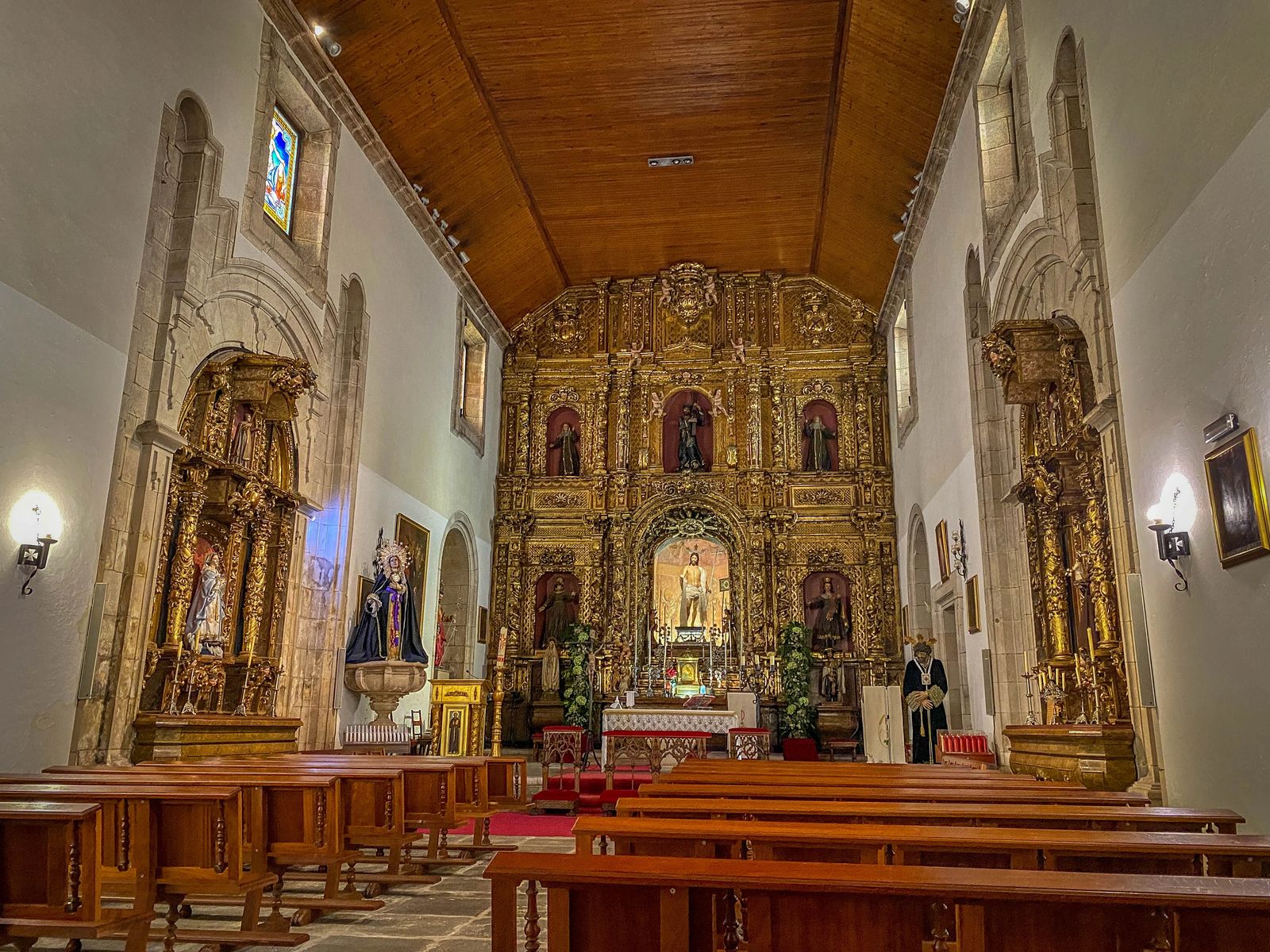
Iglesia de San Francisco
This is a small baroque church next to the military museum. It was built in 1674 right next to the San Francisco convent before it was moved to the Santa Margherita barrio. When you go inside you see a sculpture of San Francisco embracing Jesus Christ, as well as the body and legs of Saint Louis, King of France. A curiosity of this church is that on the occasion of the celebration of San Antonio Abad on January 17 of each year all the animals are blessed.
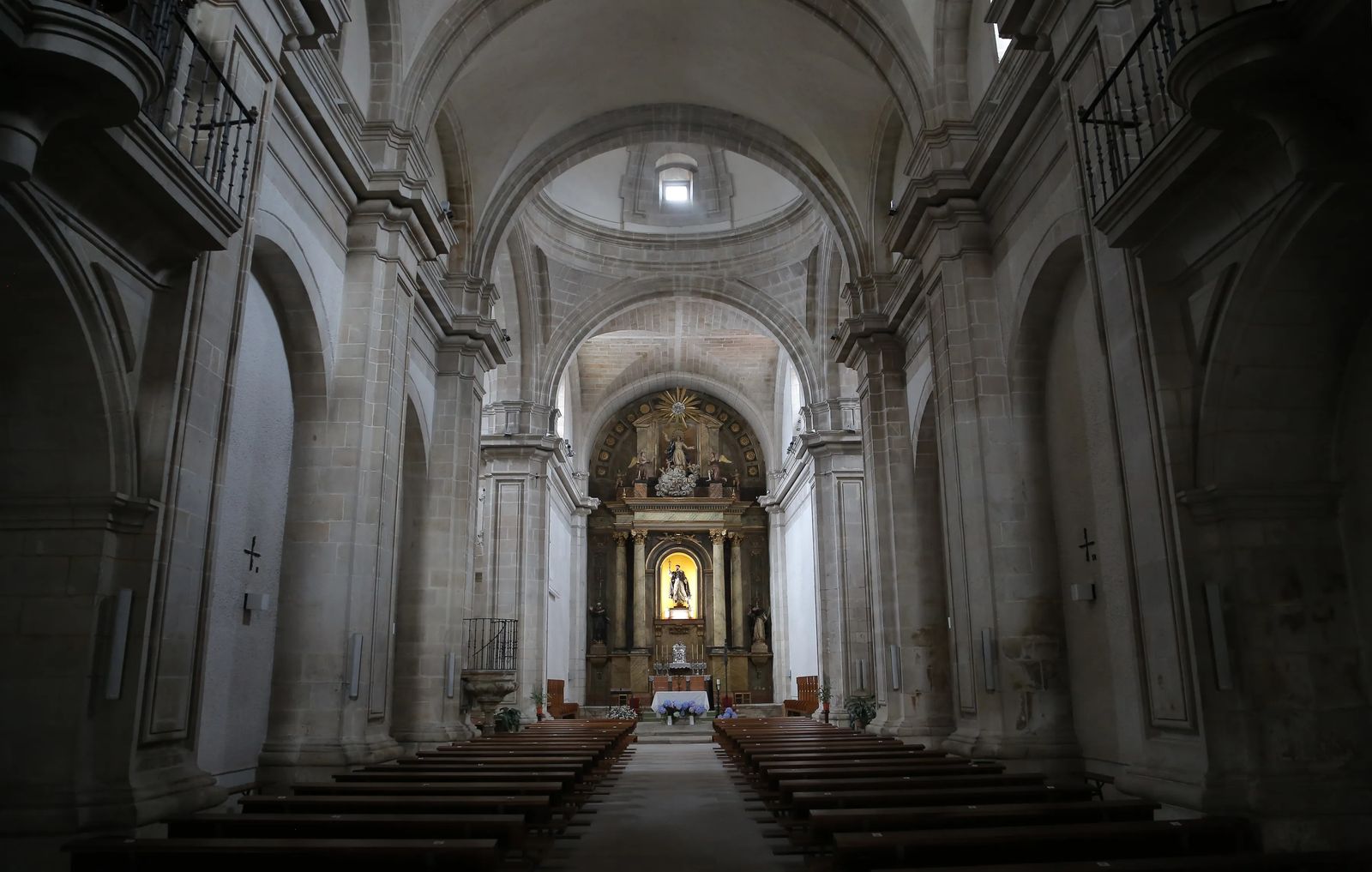
Iglesia de Santo Domingo
Iglesia de Santo Domingo was built in 1613 this small Baroque church is one of the older churches in Coruna. The area of this church to note in particular is the chapel of Los Remedios, for Rosario, the patron saint of the city. This is one of the churches that is part of the Camino de Santiago for the English and Celtic Camino.
It is difficult to establish a clear date of arrival of the Dominicans in the city of A Coruna. According to tradition, the convent was founded in 1227 with the patronage of Dona Sancha and Dona Dulce, daughters of the founding monarch of the city, Alfonso IX.
The convent was located in the neighborhood of Santo Tomas, near the Puerta dos Ares, a place of passage and where greater contact was established with the most disadvantaged.
In 1548 the complex suffered a fire and then, in 1589, it was destroyed during Francis Drake's attack, so very little of the medieval construction remains. The Community then decided to temporarily move to the hermitage of San Sebastian, until the new convent was built, this time inside the walls.
Among the preserved pieces from the medieval convent of Santo Domingo, the tympanum of the Epiphany stands out, which shows a great naturalness in the position of the legs of the Child Jesus and in the movement of the Virgin's mantle.
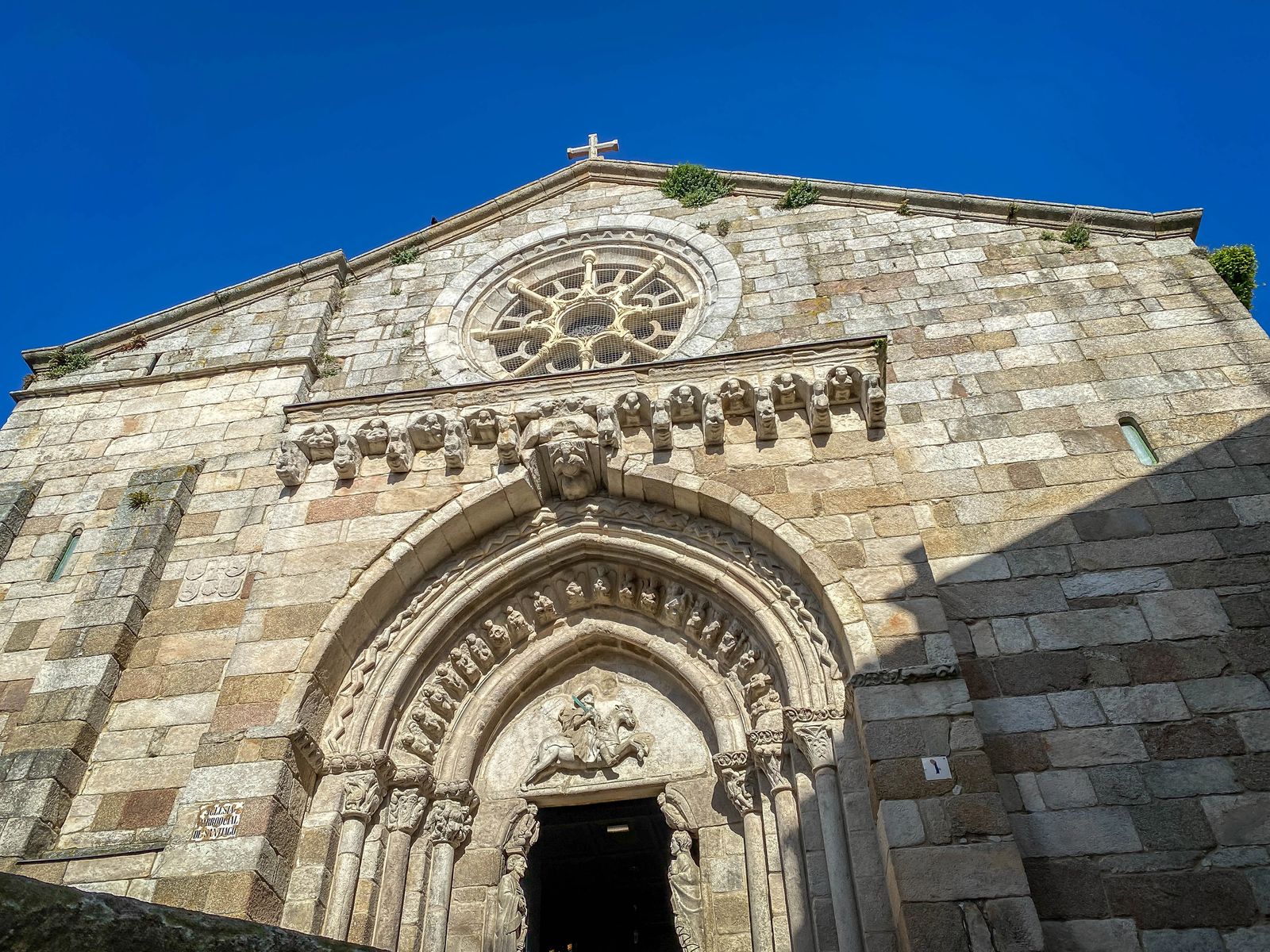
Iglesia de Santiago
Igrexa de Santiago was founded in the 12th century, it became a historic monument on 18 August 1972. This is Coruña's oldest church, and the city authorities used to meet in the atrium in the 14th-15th centuries to discuss the different politics of the city so as to stay out of the chilly winds that blew in from the Atlantic. The western façade displaces the Apostle St. James on horseback (see photo), and the church was once surrounded by a cemetery, with the tombs that are remaining facing out towards the street.
It is a quiet church that is actively used by Patrons and has a stunning collection of colorful stained glass windows and wooden floors. It is definitely worthwhile to see it, but be mindful of taking photos while people are worshipping.
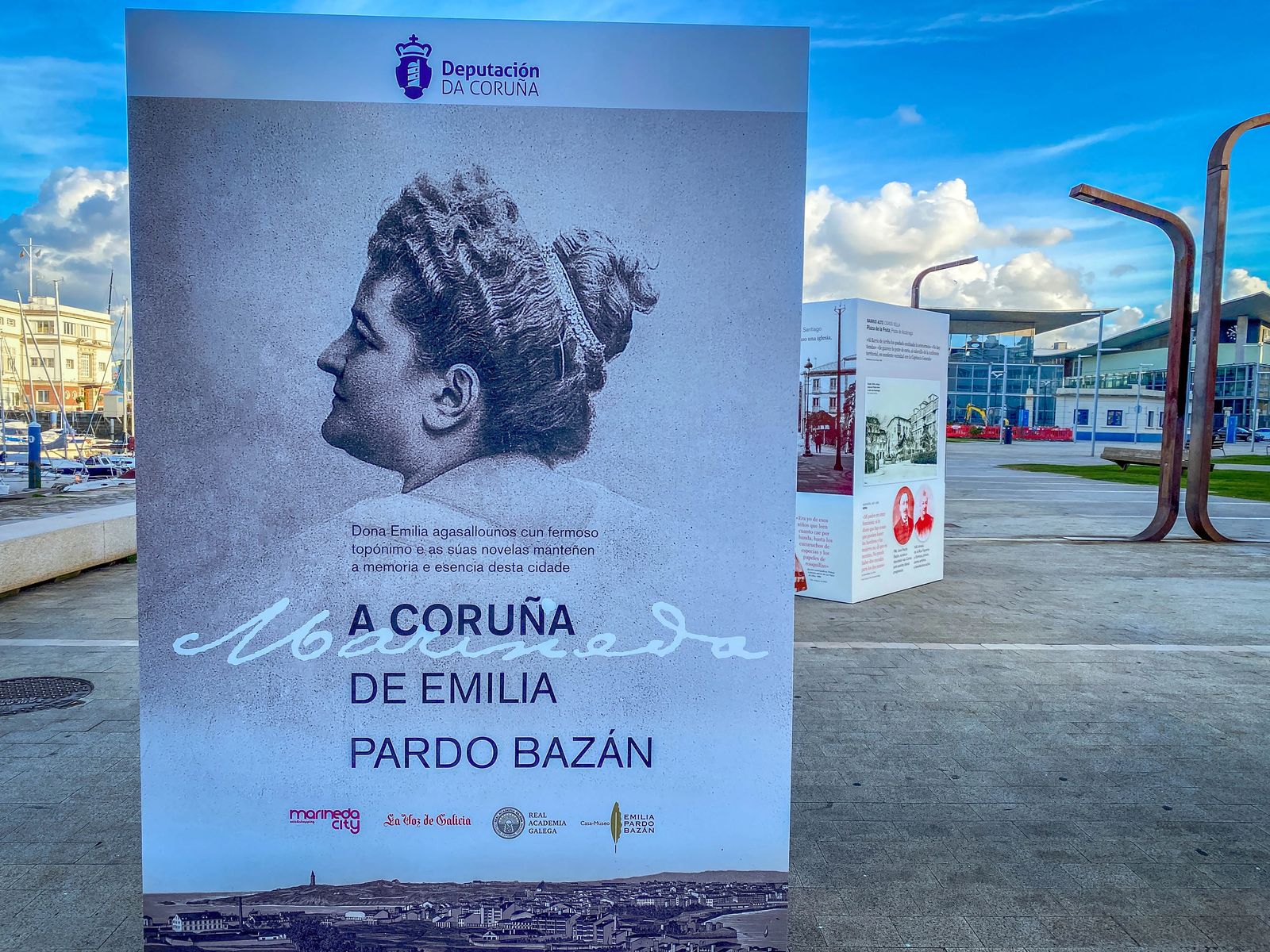
Casa Museo de Emilia Pardo Bazán
Various hours, so check the website - Winter (sept-June 9 am-2:45 pm, or 430-745 pm)
Emilia Pardo Bazán was both a countess and a Spanish novelist, journalist, literary critic, poet, playwright, and professor. She detailed reality in a very natural way and broke through with feminist ideas in her era about women's right to education and prominence in society.
The first poems she wrote were at the age of nine, with frequent visits to France she became fluent not just in French but also in English and German. Despite being forbidden to attend college, she dove into political and scientific discussions with her father's friends all of noble and high-ranking birth with access to the books she was not allowed to study.
Emilia married a country lawyer at 16, it is rumored that she was heavily a part of several underground political campaigns against the republic. Her first essay won an award for critiquing the works of a benedictine monk Father Feijoo (whom she admired). She continued to write books, novels, and critiques which led to a bit of a social scandal that caused a divorce but not before an affair with writer Galdos had taken place.
Her works spanned many decades, with her last novel being published in 1911, publishing more than 600 works over the course of her career. She is considered a historic figure in Galicia and a centerpiece of its history, especially for women, who seem to be exceptionally celebrated in this area of Spain.
This was once her home and all the contents are from her time period, with much of the interior being the original. It gives you a glimpse into what life may have been like for a woman of prominence in the 19th century in Northern Spain.
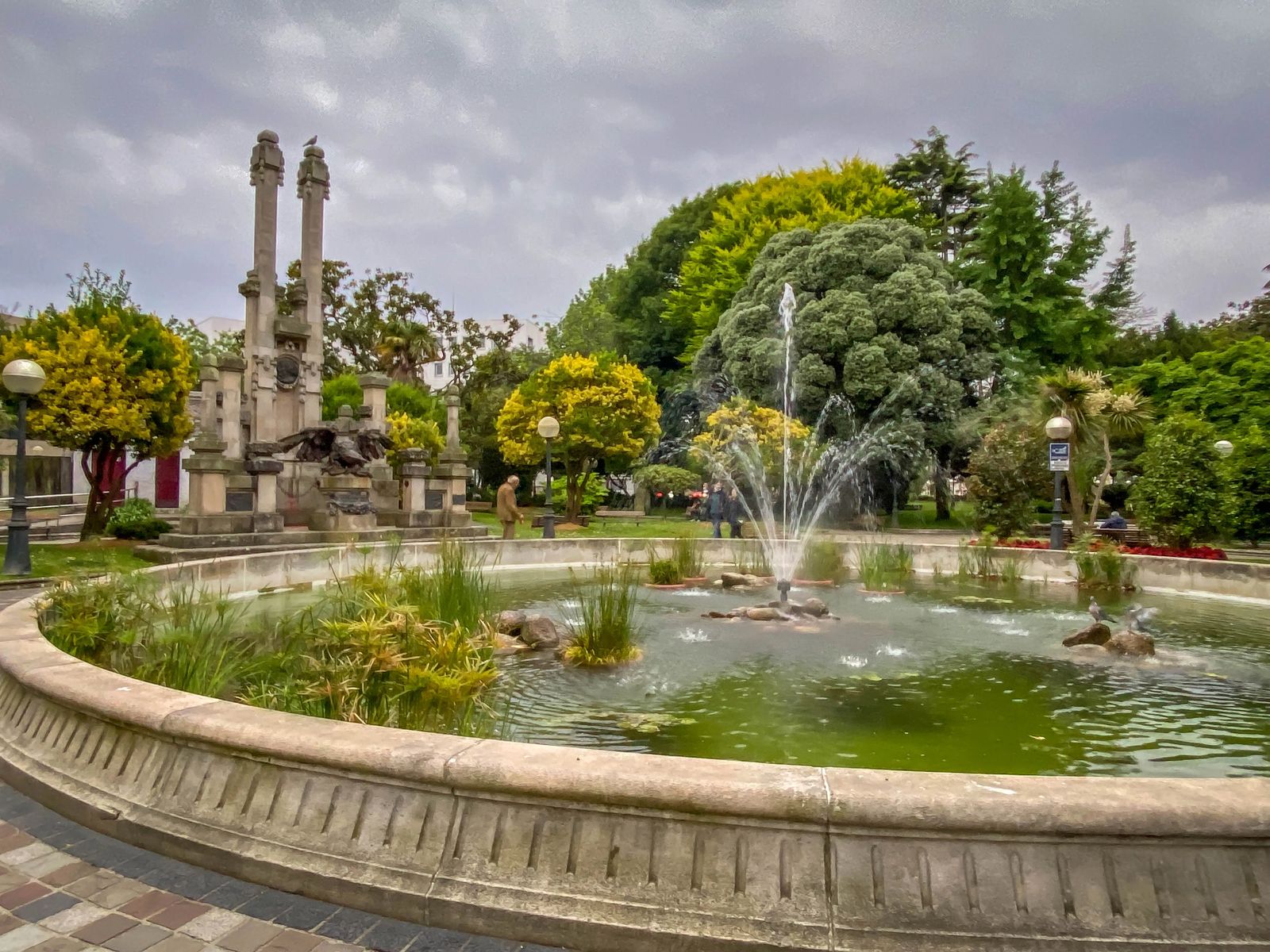
Stroll Through Jardin Mendez Nunez
This quaint garden is full of beautiful trees, flowers, foliage, visiting birds, and a perfect place to take a morning stroll with a cup of coffee. These gardens date back to the 1800s and are some of the oldest gardens in the city. There are many monuments in the gardens dedicated to important people from the Galacia area. There are vendors selling small bites to eat nearby, the elderly are taking their afternoon walks here, and is a perfect place for some photos.
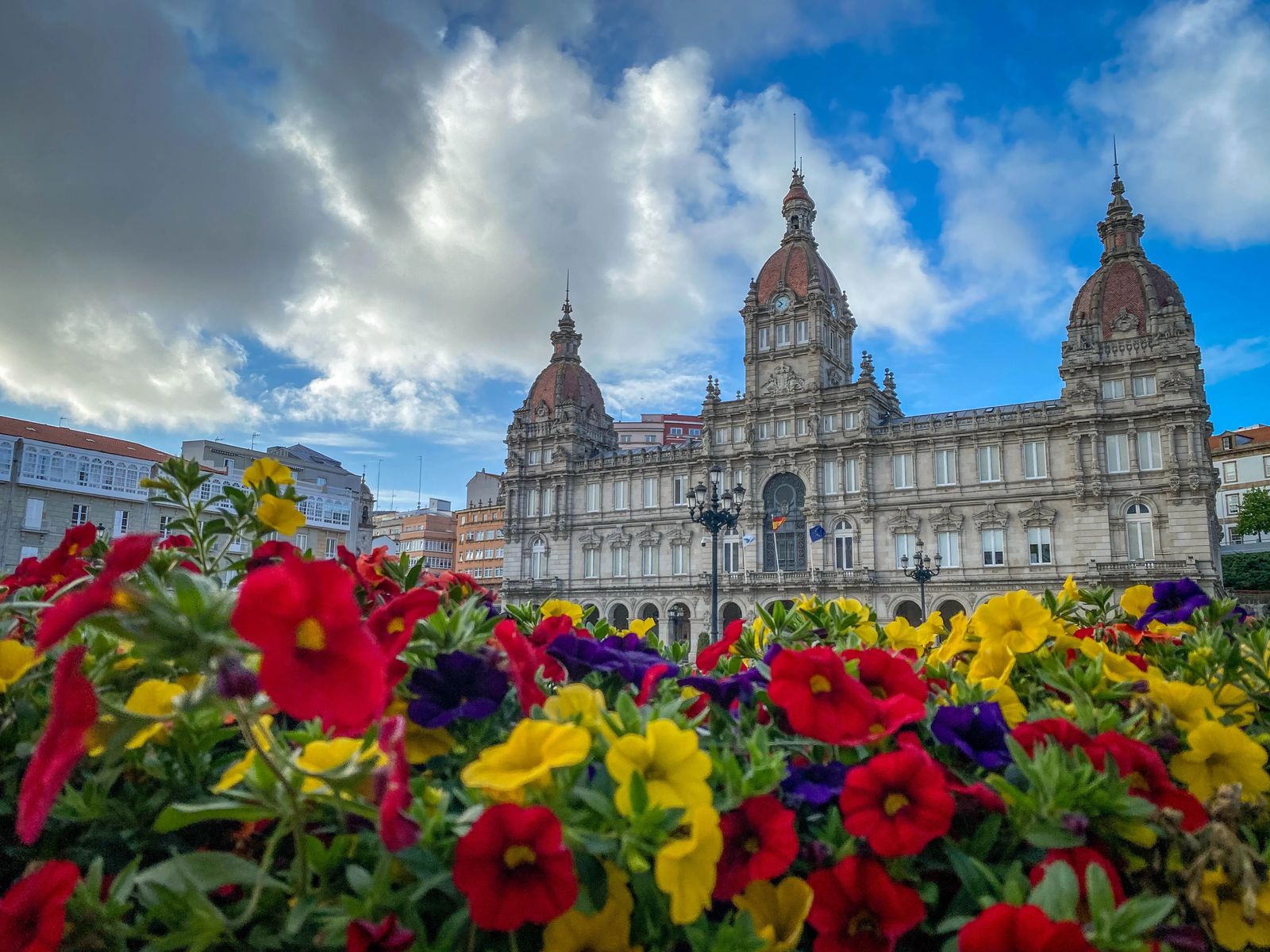
Town Hall (Maria Pita Square)
Open Mon-Friday til 5 pm, Free admission
Built in 1918 this modern building with huge garnet domes, iron balcony, and the glass oculus has 15 arches adorning its front and three floors on the interior. Inside you will find stately adornments with modern textures on the walls leading up to the stained glass appearing ceiling.
The mayor's office is within this building, as well as a clock museum that is considered the most important clock collection in Spain. While I was visiting my friends in Spain who moved back to her hometown Coruña, most of the paperwork for immigration, healthcare, taxes, and paperwork in order to own property were done here.
To view the interior is free, but always guided because of the enormous amount of legal work done within the building.
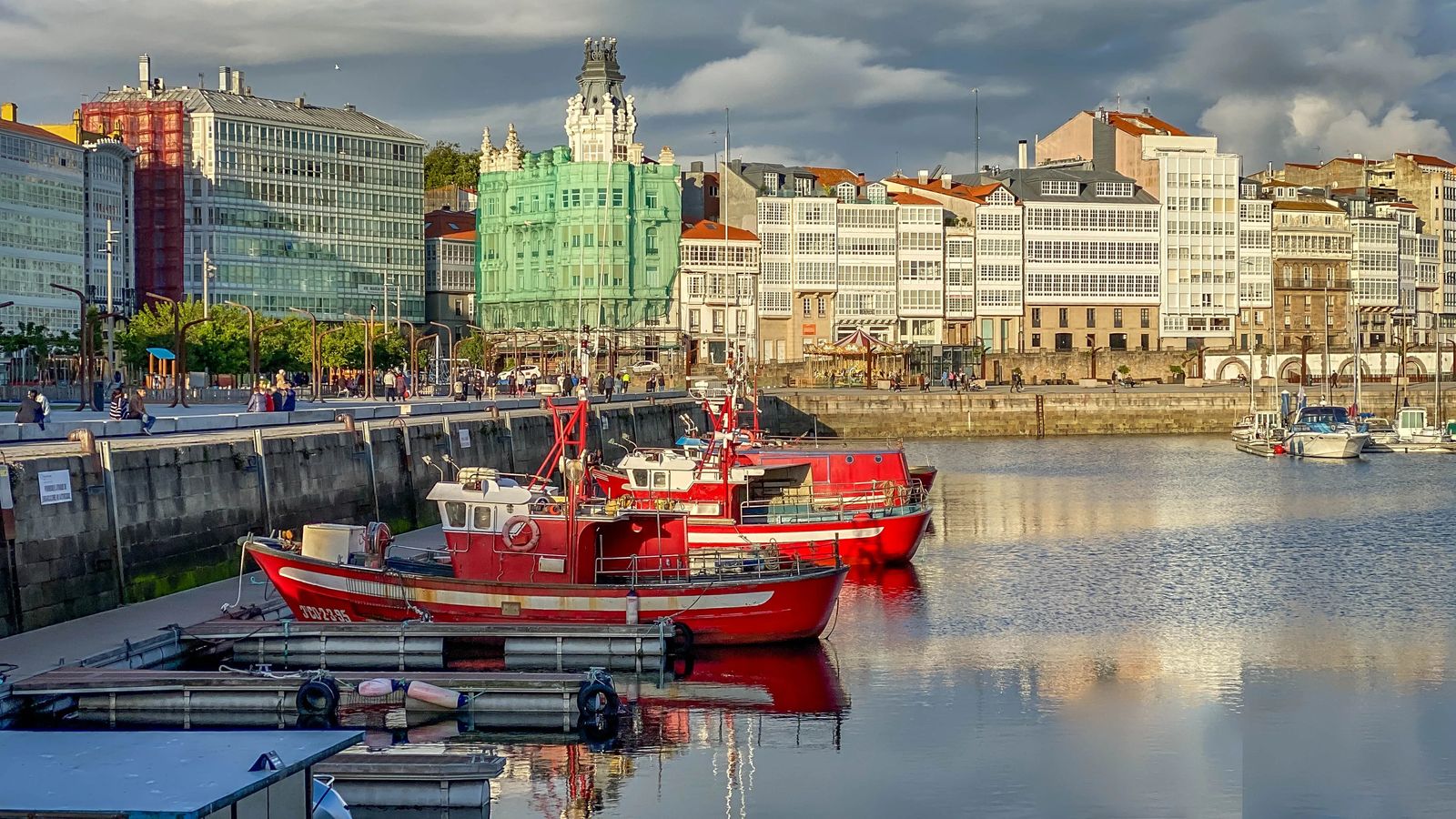
Avenida de La Marina
The Crystal City or the City of Glass is what Coruña is known as, this is the largest collection of glass structures in the world along the Avenida de la Marina. You can get architecture here ranging from neoclassical and baroque to Romanesque and Renaissance. The Galerias in Coruña is merely another term for balconies, but specifically, balconies enclosed in glass.
As you walk along you may see many people using them as a perfect place to dry their laundry. In the past citizens would use them to get a taste of the outdoors without being subject to the winds of the Atlantic.
It is also where the fisherman used to stay and would put their boats in the archways under the buildings. You can still see some of the rings where they would store their ships. This area near the port is often flooded during winters, so it isn't hard to imagine that ships would be pulled more inland for storage during the worst storms.
To get the best views of the the City of Glass, then head to the front area of "Marina Avenue", this is the spot where the fisherman's houses were (now offices and apartments). At sunset the dramatic colors reflecting on the glass can be blinding, but also beautifully serene. In the evenings you can find locals enjoying drinks, tapas, and dinner.
While the other area to see these Galleries aren't as magnificent you can also see examples of them on Juana de Vega, Picavia, Feijoo, Plaza de Lugo, and Plaza de Pontevedra. The glass balconies in Coruña definitely are what set this city apart visually from any other city in Galicia.
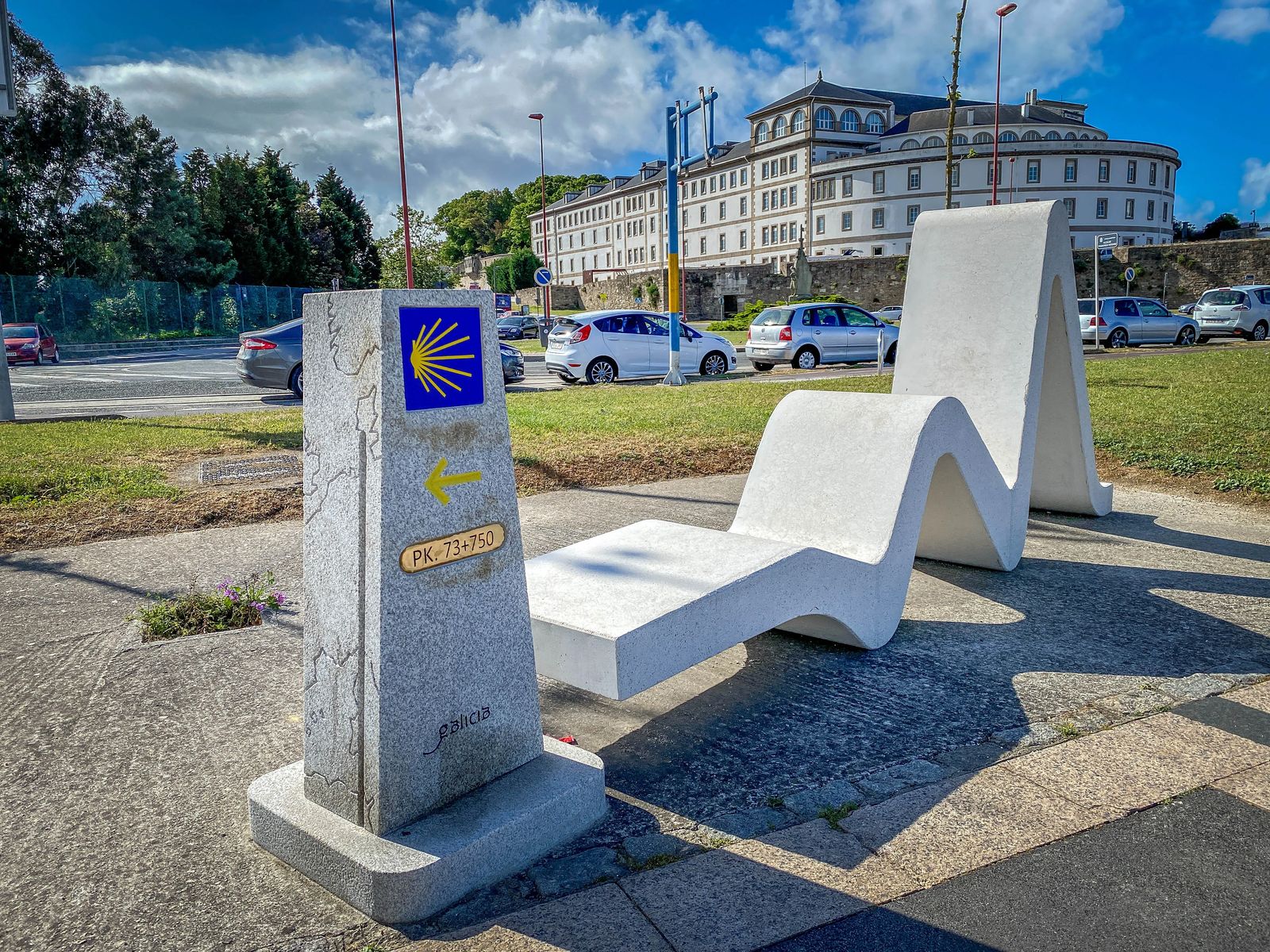
Camino de Santiago (Camino Ingles or Celtic Camino)
The Celtic Camino takes you 46.6 miles (75km) from Coruña to Santiago de san Compostela. This was the preferred route for those pilgrims coming from the British Isles and Ireland. In order to 'finish the Camino' officially you will need to walk 25km either on the Kerry Camino in Ireland or Scotland, or take a bus 15.53 miles (25km) away along another Camino route in order to officially finish and get your Camino passport stamp.
If you just want to walk a bit of the path though, you can walk to Bruma-Meson do Vento by way of the Mendo River and the ancient bridge through the villages of Matino and Boucello. Pass the medieval hospital in Bruma, and head into Ordes. There is a small church, San Xiao, and the village of Casanova on your way to Sigueiro.
The last 10.6 miles (17km) is your approach to the UNESCO heritage site of Santiago de Compostela. Be sure to check out my article on the Best Things To Do In Santiago Spain, and Food to Try in Galicia to celebrate.
While this way of the Camino isn't done as often as others, I think taking the less traveled more rugged path may give you a better idea of what the pilgrims of old may have had to endure on their way to the historic resting place of St James.
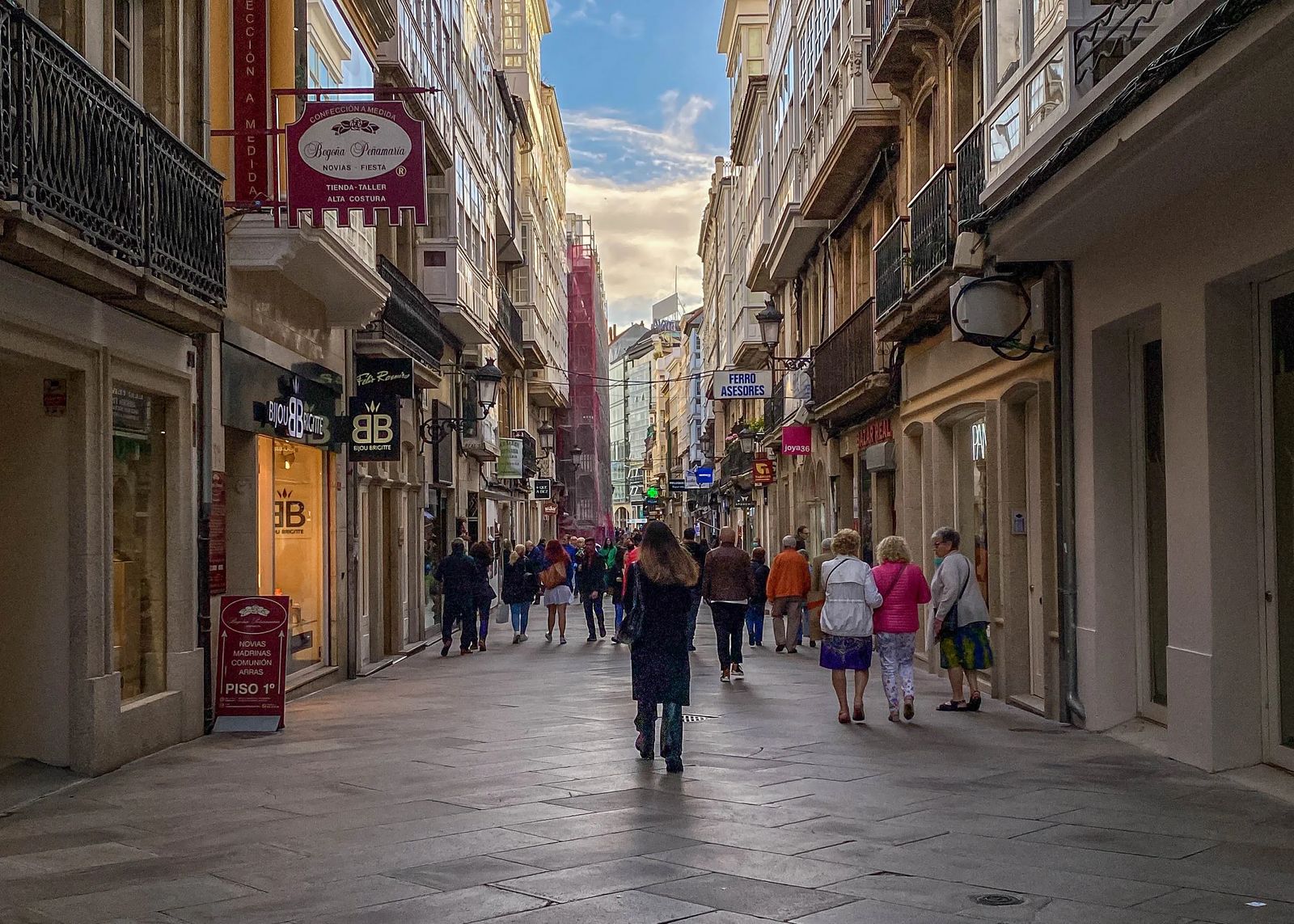
Stroll through Old Town (Cidade Vella)
Built on the site of an ancient fort dating from the 2nd century, this is where Julius Caesar once stood and is considered a Historical Artistic Monument. The city foundation was established in 1208 all centered around the church of Santa Maria along with the Church of Santiago.
In the 16th-17th century is when the city started to boom with the fishing trade, and commercial buildings and homes popped up around that commerce. You can still see parts of the defensive walls and three gates that opened to the sea as you stroll through the city.
Just beyond the City of Glass, you will find the Castle of San Anton, and the Gate of the Cravo (In front of the Garden of San Carlos) that dates from 1676. Make sure to pick out the cross of the Parrote. The Church of Santiago is the oldest in the city. You can see the former homes of Maria Pita, as well as Emilia Pardo Bazan (discussed previously) both significant heroes and figures of Coruña.
There are 18 stops within the old city with significant homes, museums, churches, and military structures that are celebrated. I picked out the ones I thought were the most interesting (to me at least). If you follow this list in order it should save you some time and walking distance.
- Casa Museo de Emilia Pardo Bazán: see description above
- Palace of the Marquis of San Martin: Walled garden from 18th Century
- Church of Santiago: 12th-13th church, oldest in the city, Apostle of St James on West side
- Plaza de Azcárraga: Old market square from the Old City where grain was sold
- Convent and Church of Santo Domingo: 17th-century church, only the Chapel of Remedies and Rosary are preserved.
- Convent and Plaza de las Bárbaras: 14th century Franciscan convent dedicated to Saint Barbara
- Casa Museo de María Pita: The former home of Maria Pita, where the Porta de Aires success took place a few feet from this very spot.
- Jardín de San Carlos: built as a defensive castle, 14th-century walls later connected to the city in the 16th century. It fell into disrepair until the 18th century and was restored.
- Castle of Santo Antón: Built in the 16th century on orders of Phillip II, updated in the 18th century, and was a prison up into the 20th century when in 1968 it was converted into the Archeological and Historical Museum.
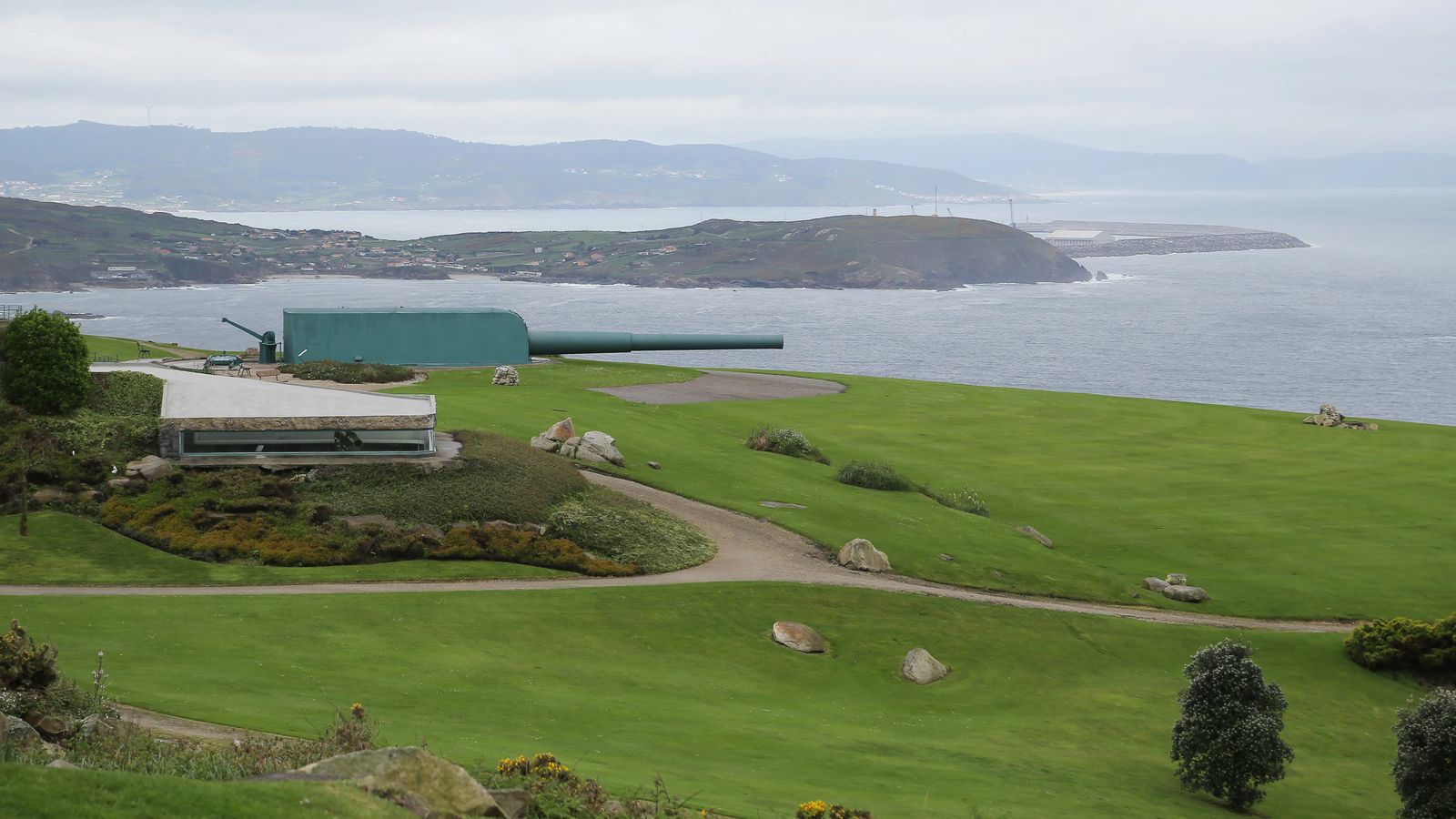
Monte de San Pedro
Just 1.2 miles (2 km) northwest of the city is Monte de San Pedro, a former military fortress with World War II bunkers, cannons, and artillery. There is an observation dome and one of the best restaurants in Coruña here as well.
There are two large glass balls (3 euro ride) that move slowly up the steep hillside, but aren't operating during winter hours so be sure to check the site for opening times. Since the 2020 pandemic, I'm unsure of the ride will reopen unfortunately.
If they aren't operating, you can always climb the steep mountain yourself as well, and bring your own snack to the top. The walk itself takes about 20 minutes, but I wouldn't try it on a stormy or misty day as the views are the best part.
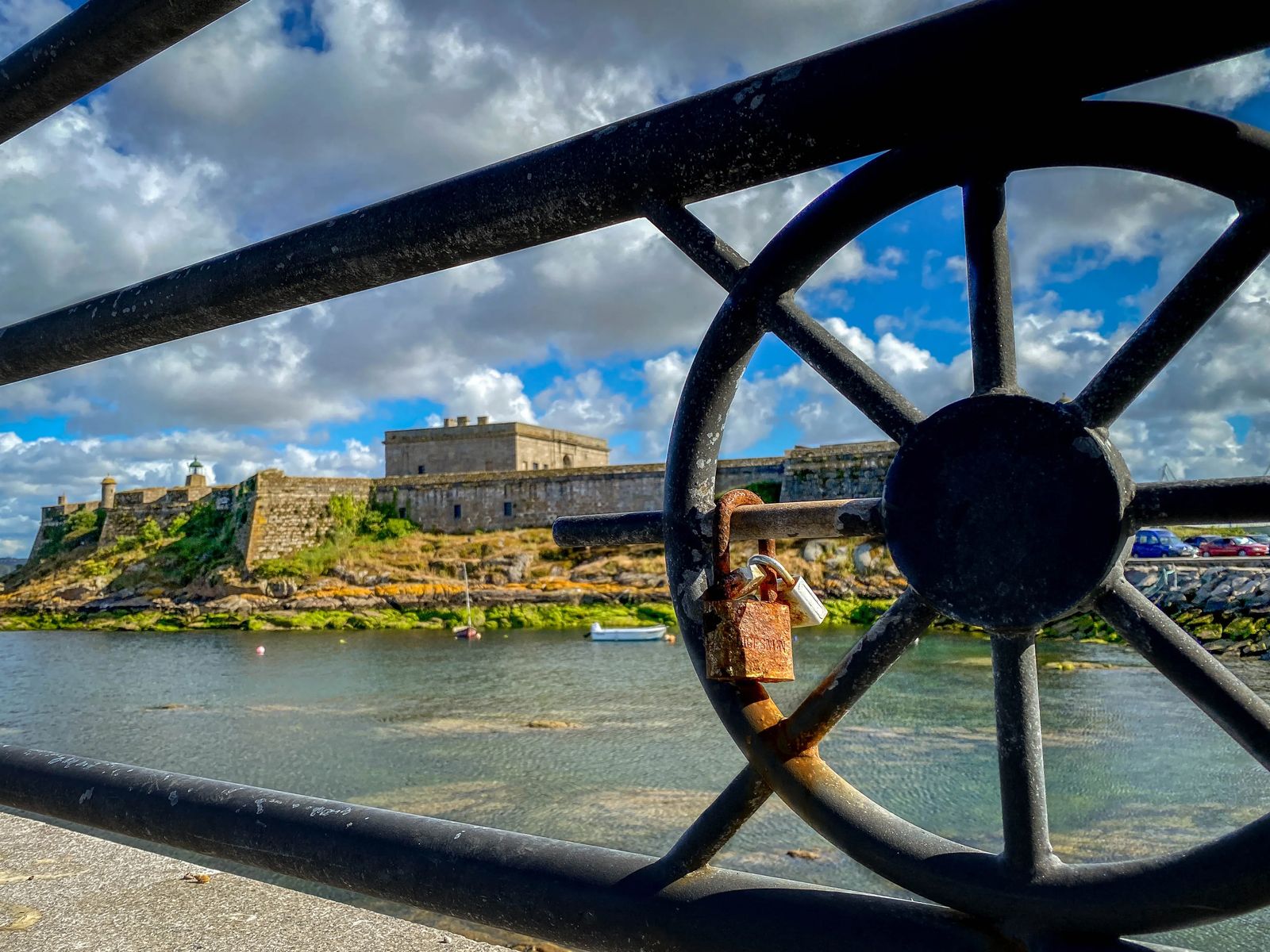
Castle of San Anton, La Coruña
Open Tues-Sat 10 am - 730 pm, Sunday 10 am - 230pm, closed Mondays
Entrance is 2 Euros
Castle San Anton was built in the 16th century on orders of Phillip II as a way to defend the city from Pirates (like Drake). As ships and artillery improved and grew, the interior of the fortress was quickly outdated by the progress of the war and turned into barracks for troops as ships could fire directly into the center of the fortress. It was updated in the 18th century and was a prison up into the 20th century when in 1968 it was converted into the Archeological and Historical Museum.
The museum has exhibits of among other things Celtic jewelry, archeological artifacts, and antique weapons. Most of the descriptions are in Spanish, but if you use the photo feature on your phone with Google Translate you can easily read the descriptions.
There was A LOT more to this castle than I was expecting and it is situated on an idyllic viewpoint. There are entire rooms recreated as they would have been during the 16th century. There is a leather bound boat, water silos, and recent Roman artifacts that were found recently in Coruña when they were renovating some of the roadways.
Even my friend who now lives here said that she had no idea that Castle San Anton had the number of artifacts that they did, and had no idea that the archeology teams she had seen when the roads were reconstructed had uncovered so many Roman artifacts. It is DEFINITELY worth your time to visit this castle, and also has some stellar Instagram photo spots here as well.

Aquarium Finisterrae
Open 10am-6pm
Entrance is 10 Euros for Adults, 4 Euros for kids and seniors
Sharks, seals, octopuses, and a 360-degree viewing tank the lower you go. It is a great way to 'see the ocean' without having to be outside in the weather. While the aquarium isn't massive, it is still a great place for families to visit, and take a bit of a rest if you have been walking around the city.
Many of the displays aren't in English, so use your photo translation feature with Google Translate if you want to read the descriptions and information. Otherwise, have fun with your imagination and the interactive displays located throughout.
I particularly liked their emphasis on the way that trash harms the marine environment as I know that the crowded beaches near the Atlantic here have been an issue in the past.
Festivals in Coruña
While this most likely isn't a comprehensive list, there isn't one place where all the festivals of Coruña are really listed. I wanted to include a few of them here in case those who like to travel and experience something like the locals do, then plan your travel around one of these festivals.
March/April: The Festival of the Sardine and Carnival
August: Fiestas de Maria Pita (folk, classical and mainstream music - all free) AND Festival Noroeste de Galicia (all free - artists like James Blunt and Luis Fonsi performed in 2022 to give you an idea of who they invite).
August is the month to celebrate St James, who is the patron saint of Galicia (which Coruña is a part of).
My friend also told me about a bonfire festival (in August) on the beach where you have to jump over a small bonfire (many dot the beach) because that is the tradition.
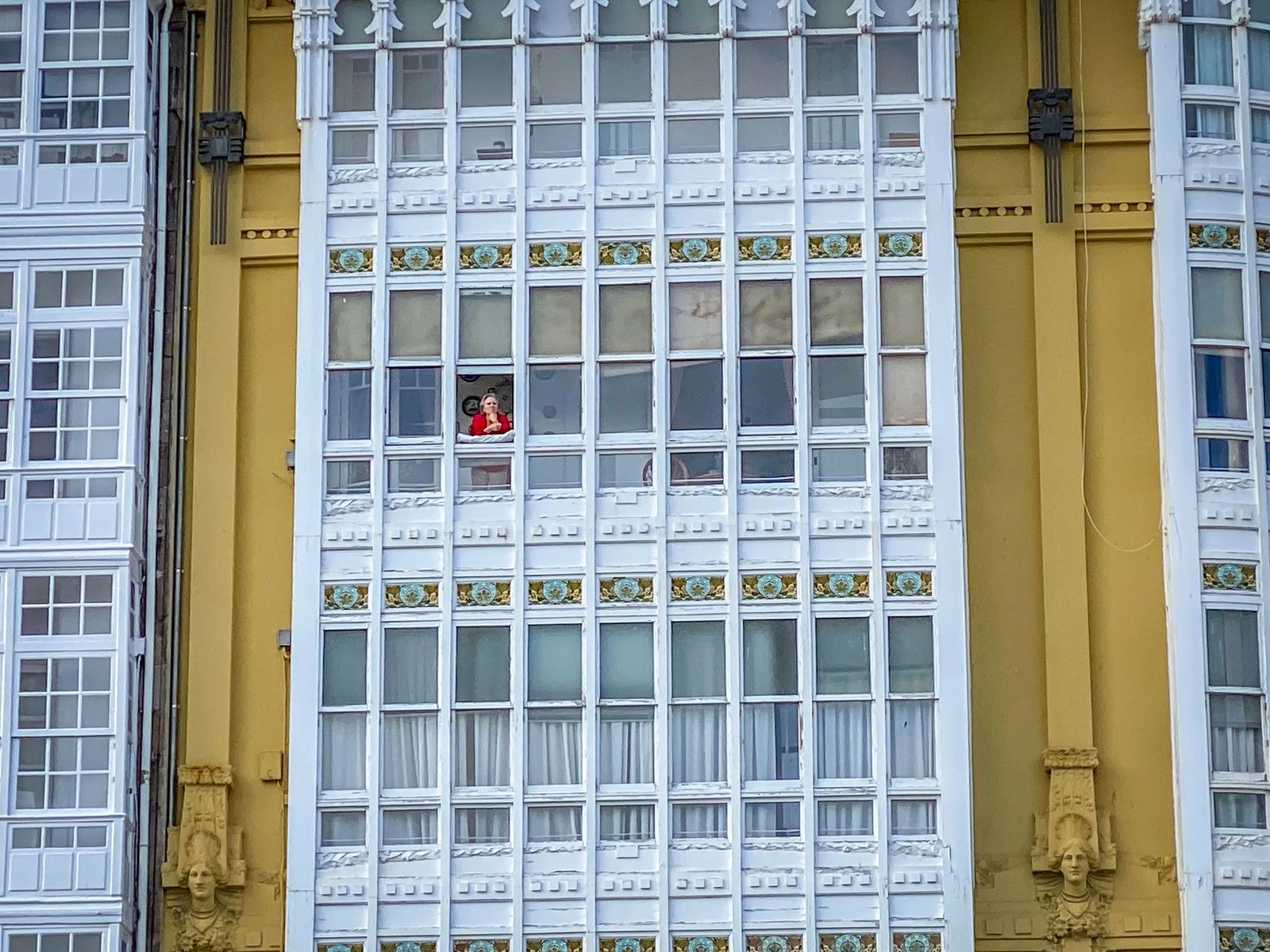
My Takeaway From Exploring La Coruña Spain
When I planned to visit my friend in Coruña I hadn't planned on making a massive amount of content or even writing an article, to be honest. YET I was blown away by the hospitality of the people here, the ease of life that seemed to come from the sea and burrow into the hearts of the citizens as well. There is so much history and culture that has been hidden away in this off-the-beaten-path city. I was not expecting to fall in love with this city as much as I did, and cannot wait to go back.
Coruña has its own airport and a train station that is just a 30-minute ride from the popular ending point of the Camino de Santiago. The infrastructure in the city with the bus system, taxis, and lack of pollution truly make this a perfect Spring and Fall getaway for those looking for a relaxing vacation full of cultural intricacies and curiosities.
Google Map of Locations Mentioned
Like it? Pin it for later! Sharing is caring ;)
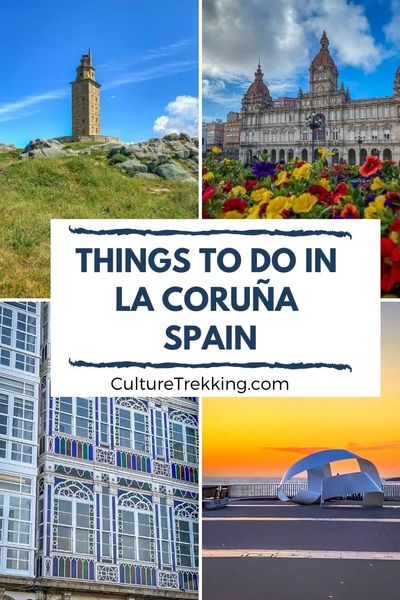.jpg?fit=outside&w=1600&h=2399)
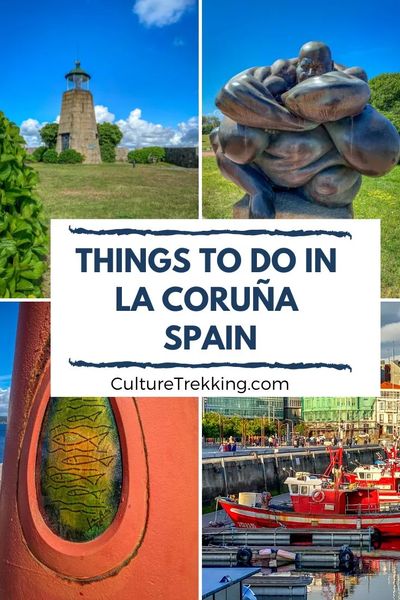.jpg?fit=outside&w=1600&h=2399)
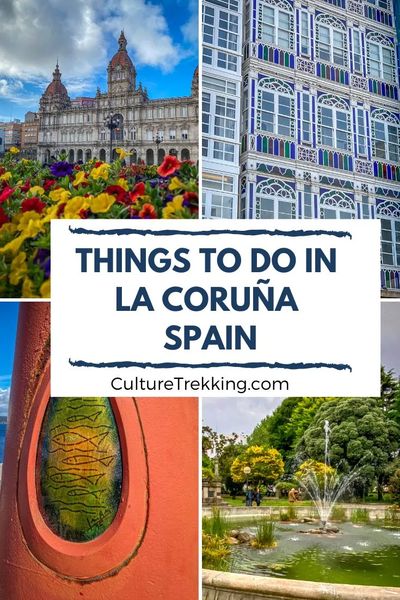.jpg?fit=outside&w=1600&h=2399)
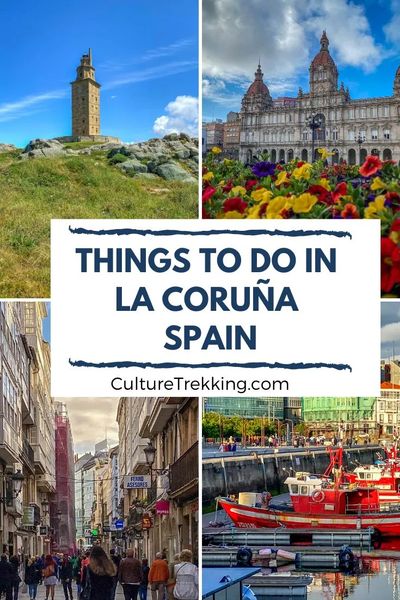.jpg?fit=outside&w=1600&h=2399)
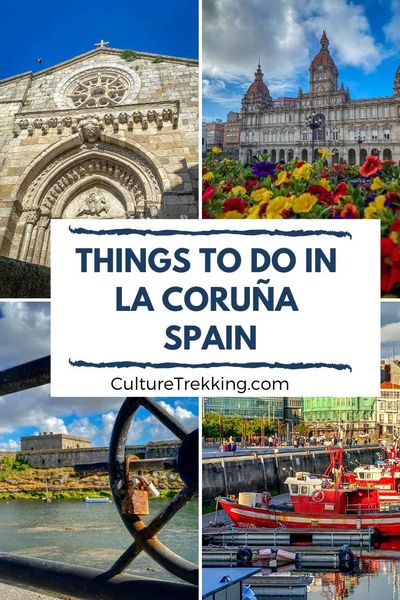.jpg?fit=outside&w=1600&h=2399)
Where to stay in Coruña
Airbnb is only $30-$113 per night, you can even rent a boat to stay right on the water. The city is easily walkable and food runs anywhere from $1 for Tapas to $30 for posh seafood or T-bone steak meal with drinks and dessert.
Latest Articles On Culture Trekking


Welcome to Culture Trekking!
My name is Janiel, I specialize in solo female travel, cultural connections, sustainable adventures, food and history to help make your travel experiences fun, meaningful, and delicious. My experience in travel, and my personal story have allowed me to get published in Fodors Travel, Atlas Obscura, Metro.co.uk, Trip Advisor, and multiple Podcast interviews. You can find me on pretty much every social media channel Youtube, Instagram, Twitter, Facebook, Pinterest, TikTok. To read more about me and my story click here. If you are a brand and would like to work with me, click here.












